- Wonderfully practical and good quality interior
- Easy to use and well featured infotainment system
- Excellent aftersales package
- No leather steering wheel for this price?
- Petrol engine needs a boost in performance
- A lot less features than the hybrid
In case you weren’t aware, Honda is on a rebranding mission in Australia. It’s simplified its product range, introduced new models, added some evergreen hybrid drivetrains and moved to fixed prices nationally. Honda has also adopted a new agency model, whereby head office owns all stock and dealers take commission on each car sold instead of buying it from the manufacturer to then onsell in order to reduce complexity. One of the most important new models is the HR-V small SUV, of which the previous generation was a big seller in Australia. We’ve tested the hybrid variant and liked it a lot, so what about the entry level model? Let’s see what the 2022 Honda HR-V Vi X is like.
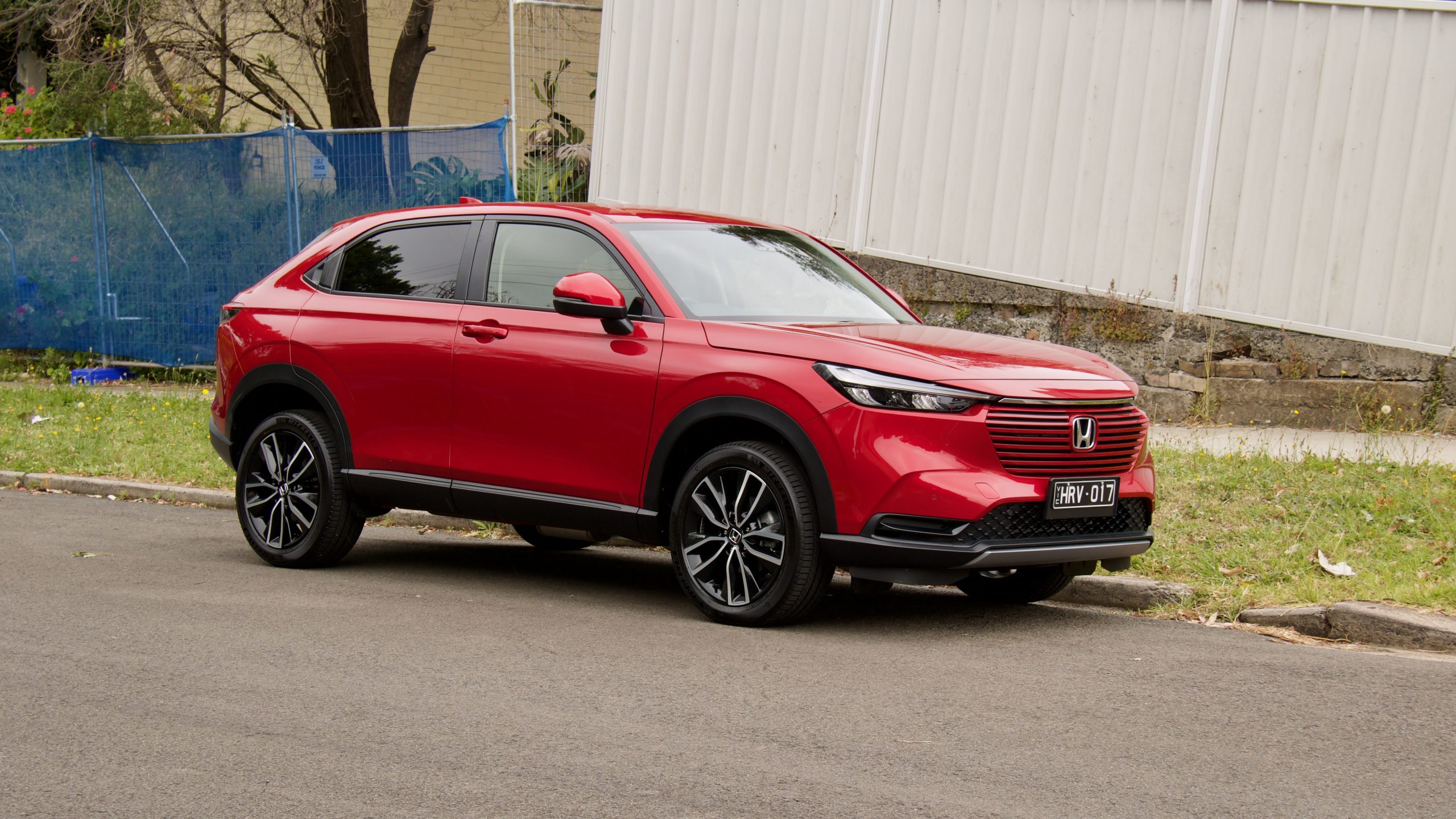
The HR-V competes in the small SUV segment and has a significant amount of competition from cars like the Mazda CX-30, Hyundai Kona, Kia Seltos, Toyota C-HR and Corolla Cross, Subaru XV, Skoda Kamiq, Volkswagen T-Roc and Suzuki S-Cross. Does the Honda have what it takes to earn your cash?
Price & Equipment: 6/10
There are two models of HR-V for sale in Australia: the entry-level Vi X that we’re testing here and the upper-spec e:HEV L hybrid. The Vi X is priced from $36,700 drive away nationally and the e:HEV L is $10,300 more expensive at $47,000 drive away.
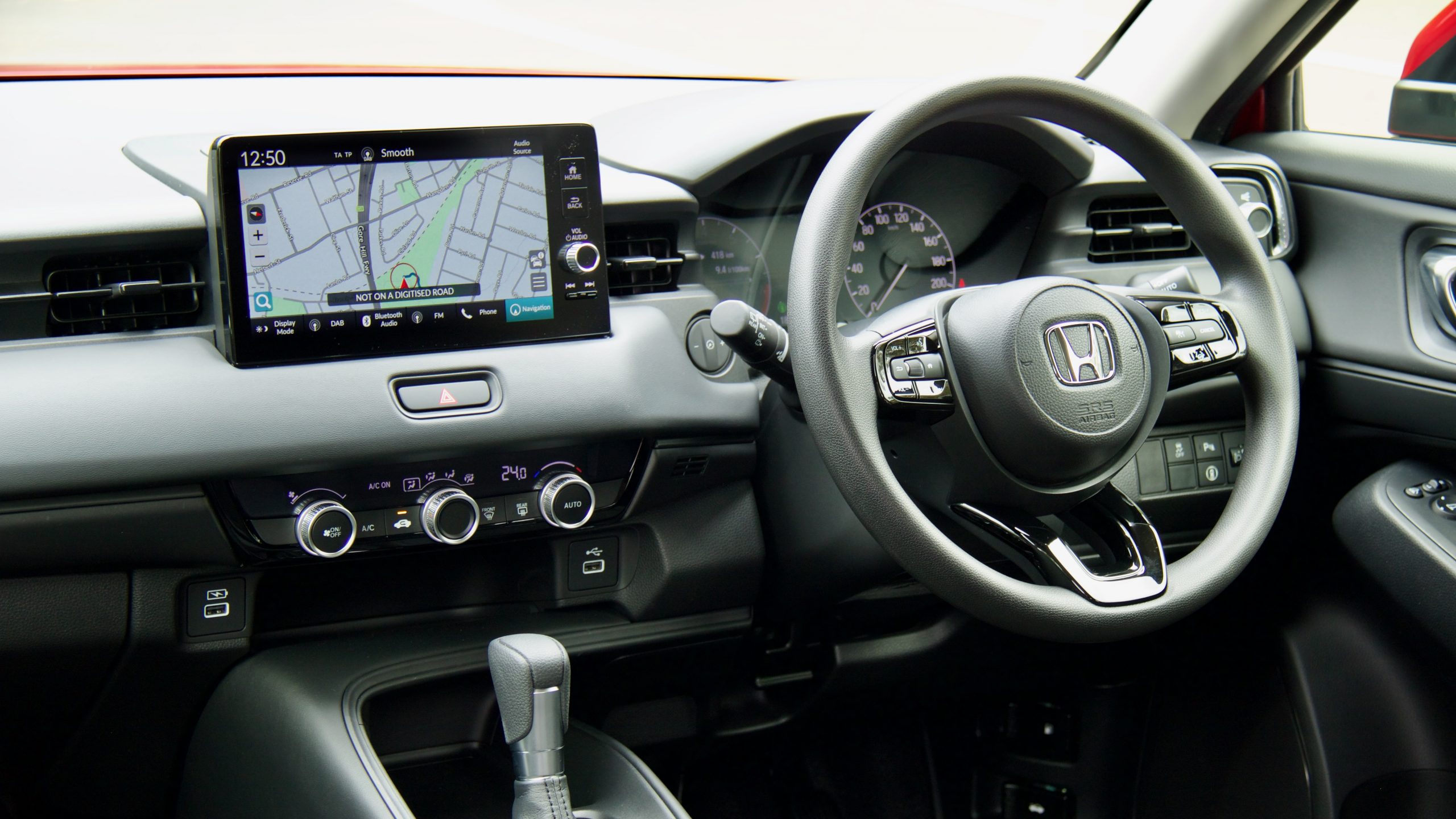
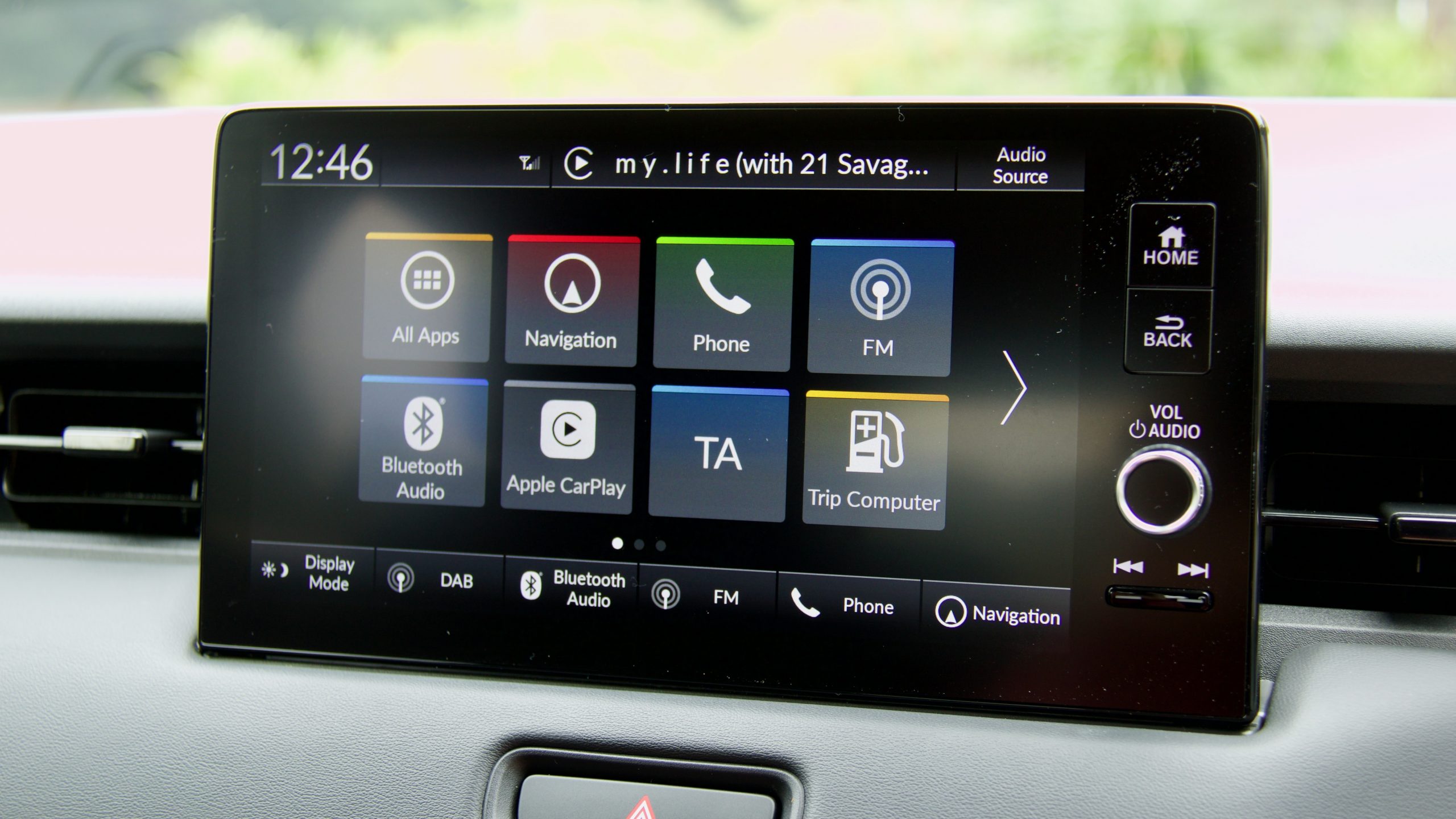
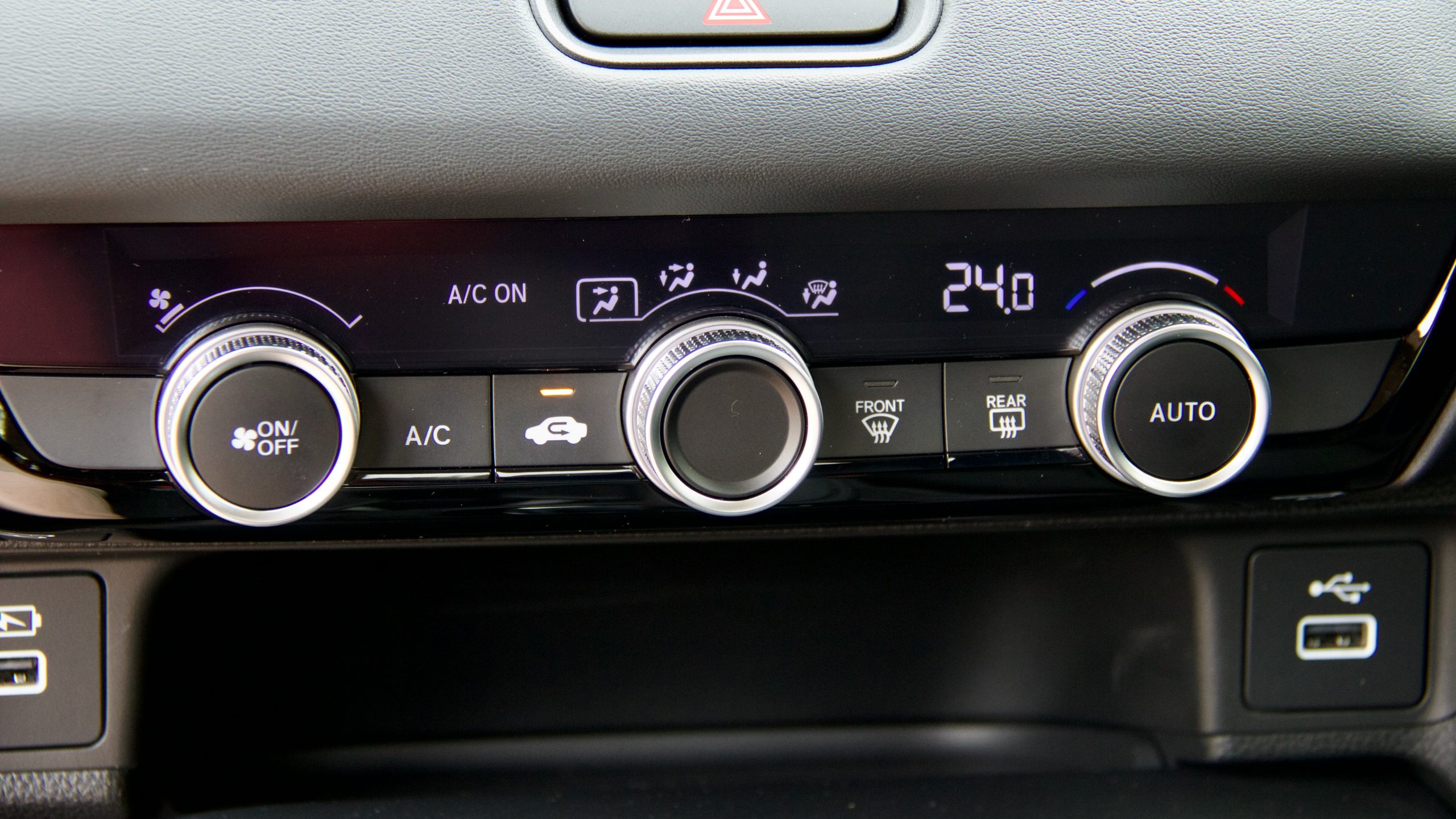
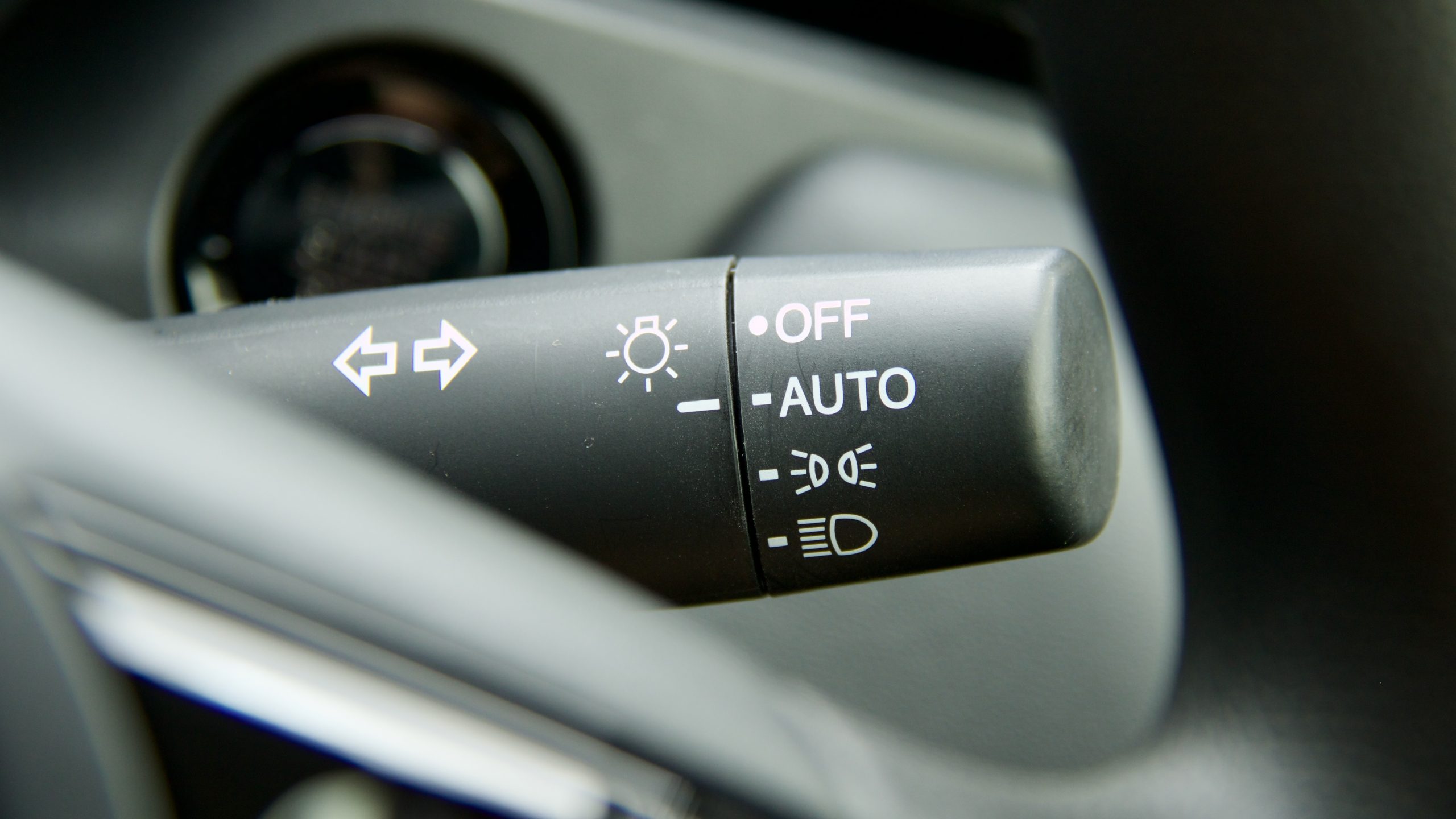
Standard equipment on the Vi X includes 18-inch alloy wheels, light- and rain-sensing LED headlights (which cannot be switched off when activated. Bravo Honda!), intermittent wipers, a urethane steering wheel, single-zone climate control, keyless entry and push button start, rear privacy glass, electric-folding mirrors, a 9.0-inch touchscreen with satellite navigation, wired Android Auto and wireless Apple CarPlay, digital radio, a four-speaker sound system, two front cabin USB-A ports, three driving modes: eco, normal and sport and Honda’s ‘Magic Seats’ in the rear.
Safety equipment includes six airbags, auto emergency braking (AEB), adaptive cruise control with stop and go functionality, lane keeping assistance with lane trace assist, auto high beam, traffic sign recognition, driver attention monitoring, a reversing camera and front and rear parking sensors. The HR-V is rated at four stars for safety by ANCAP.
The HR-V Vi X is available in five no cost colours: ‘Premium Opal’, ‘Platinum White’, ‘Crystal Black’, ‘Meteoroid Grey’ and our test car’s ‘Premium Crystal Red’. Black cloth is the only interior trim available.
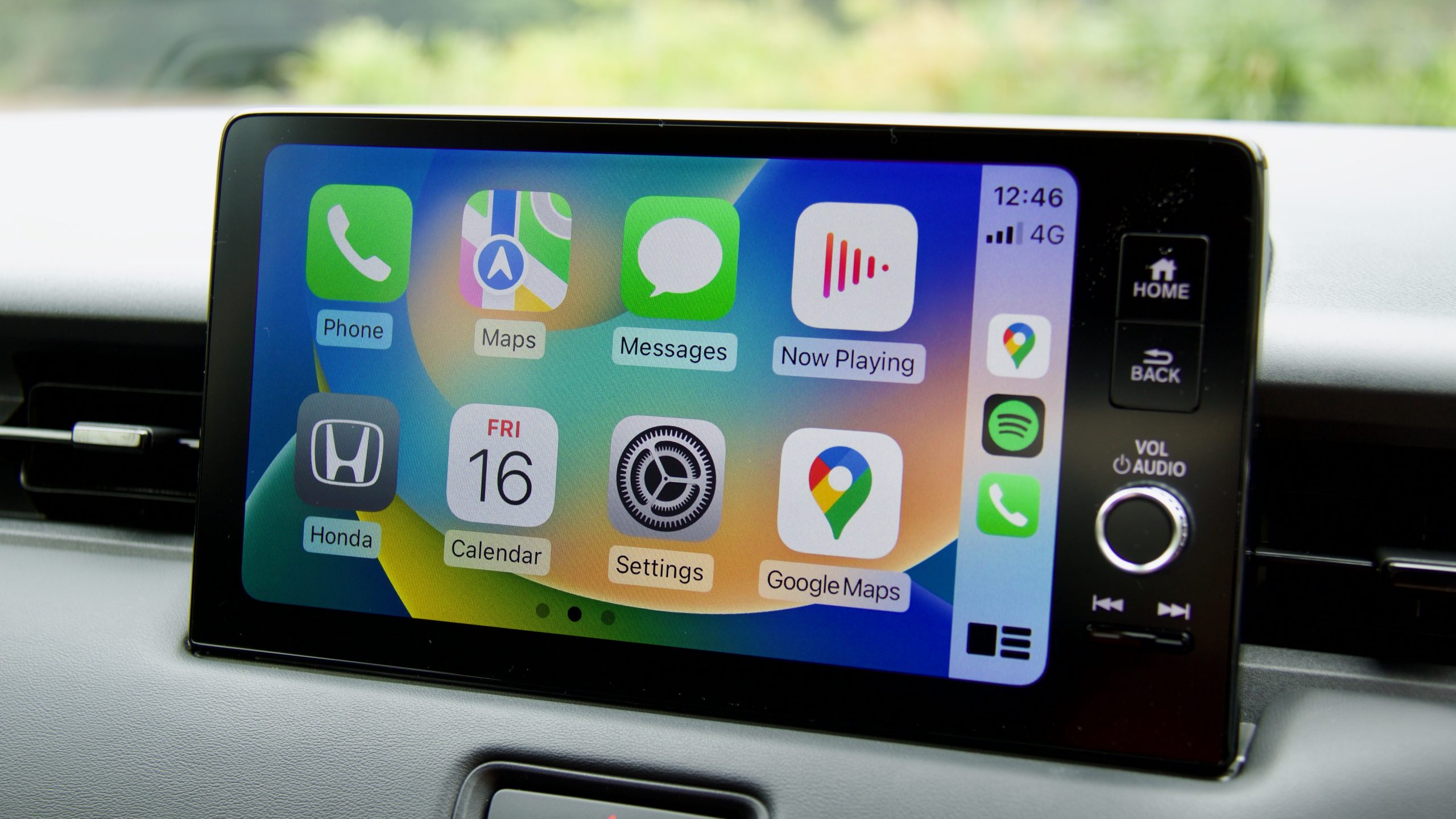
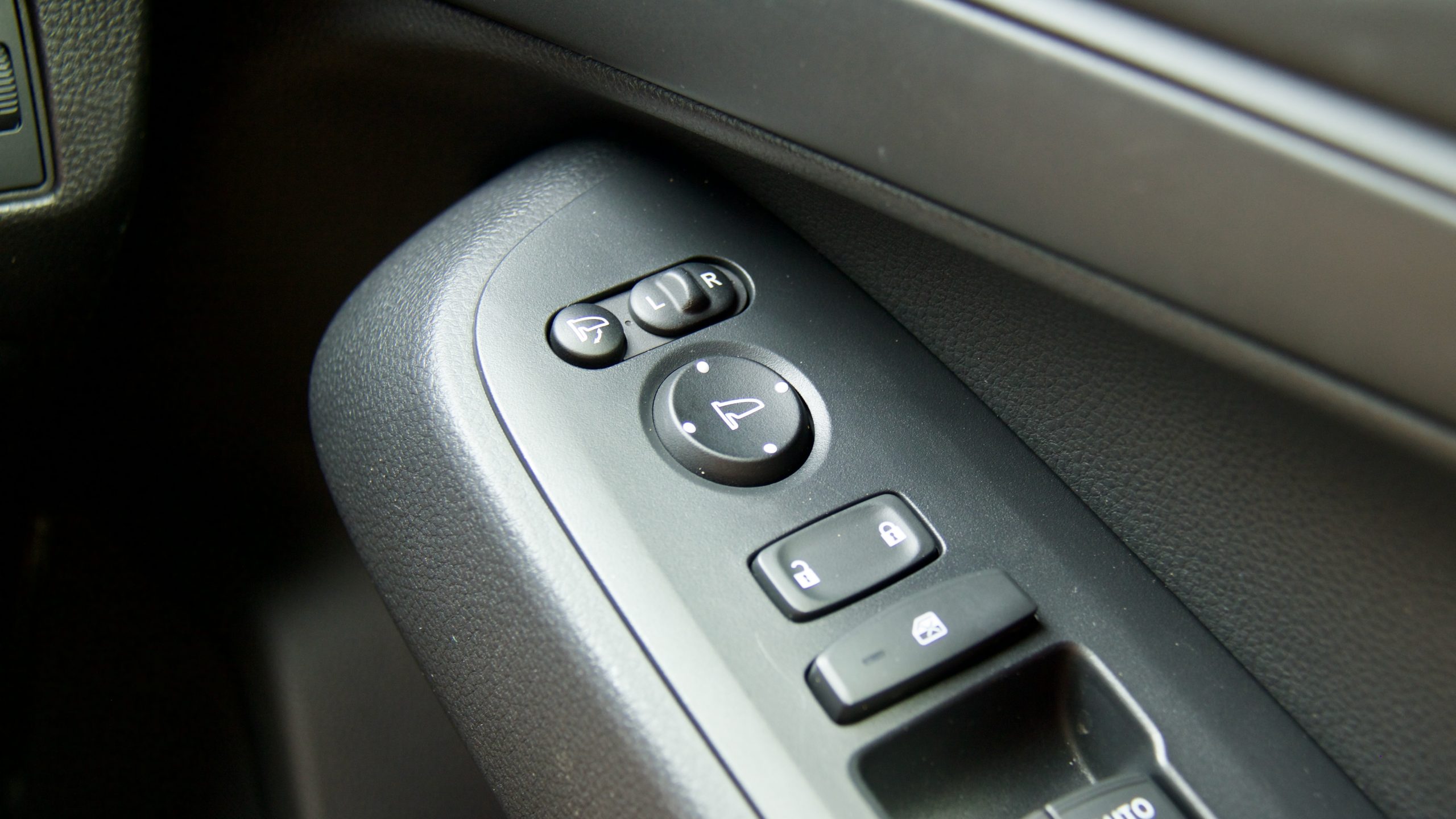
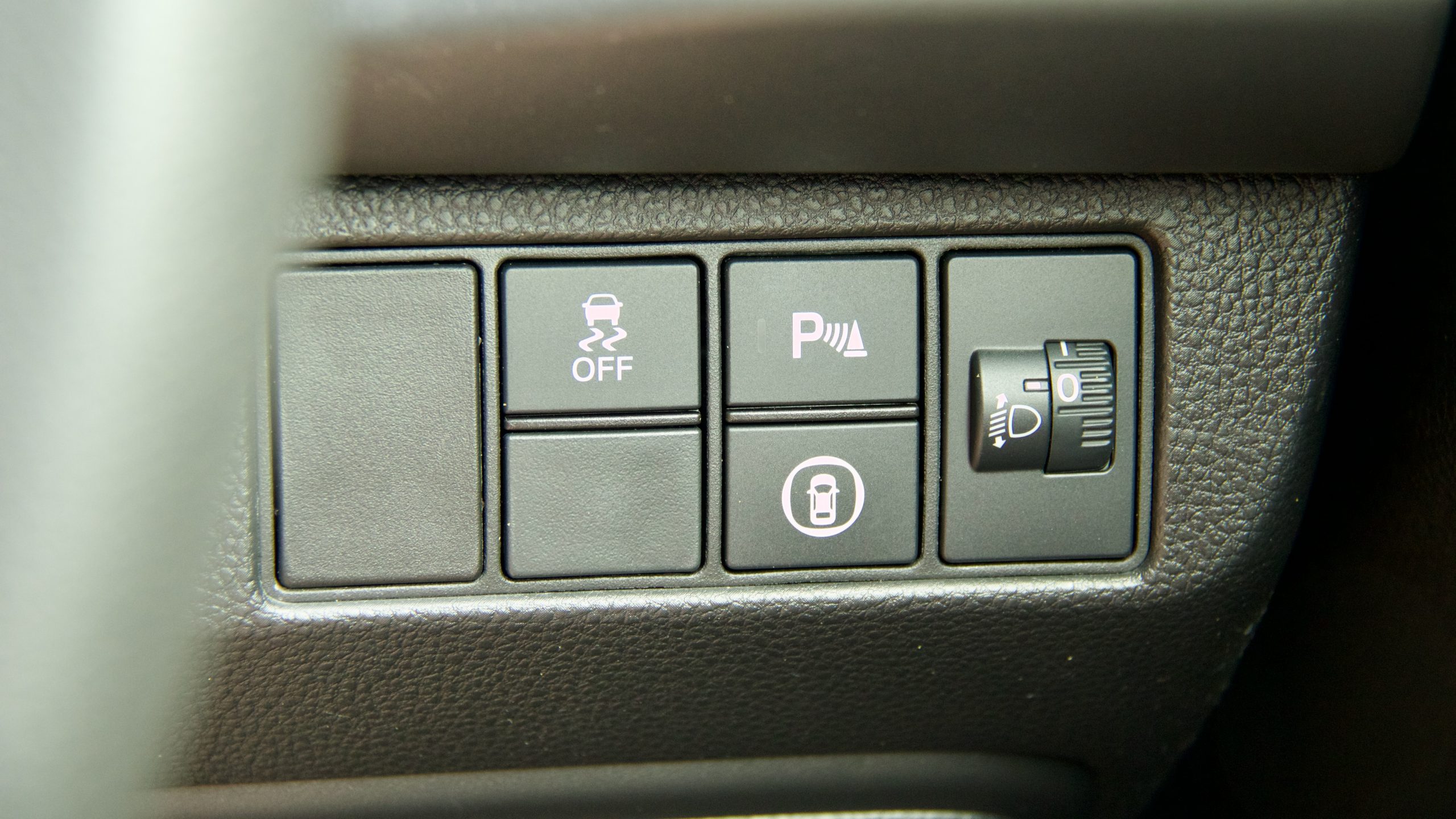
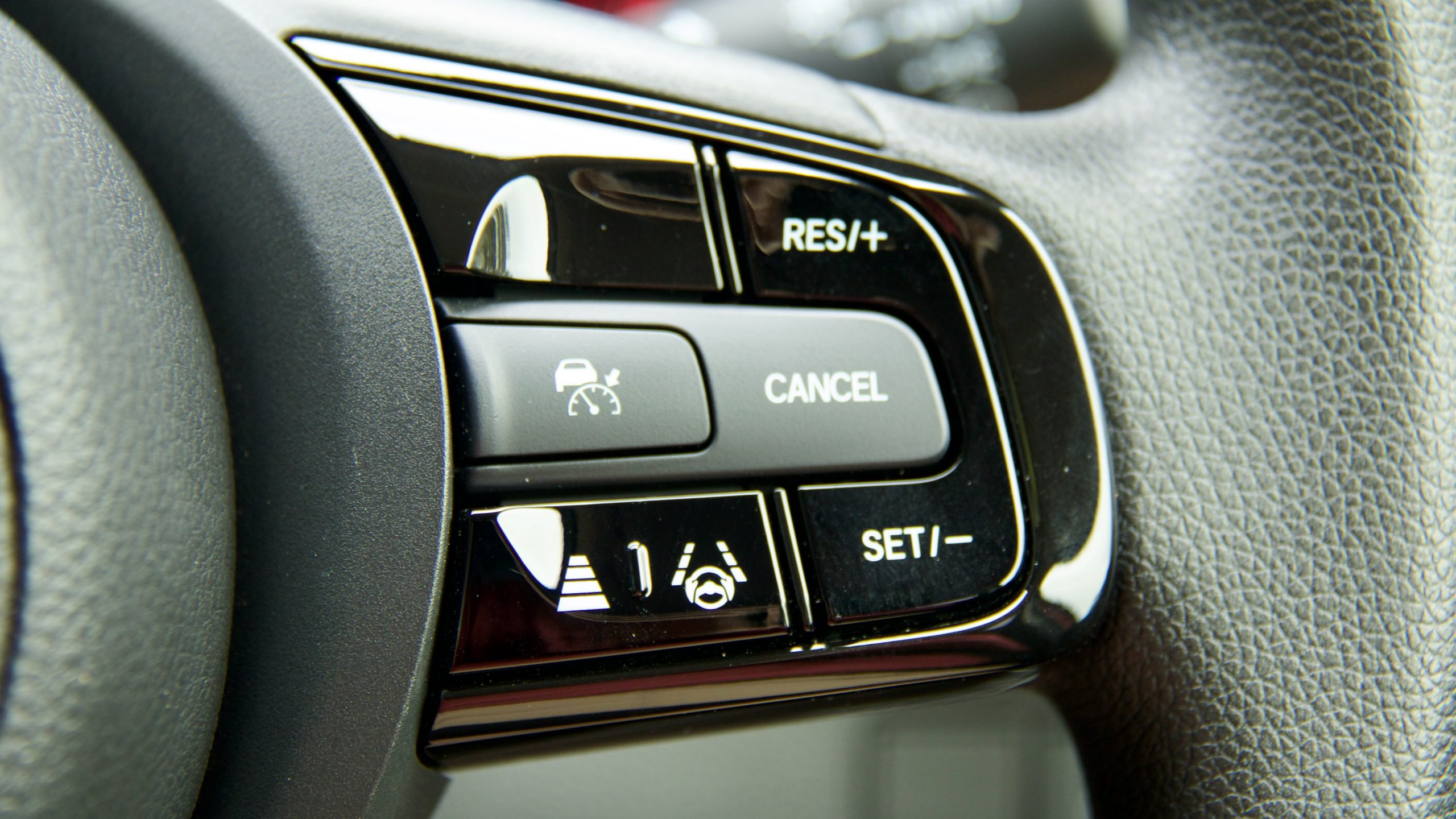
The upper-spec e:HEV L hybrid adds a lot more equipment for its large premium: auto wipers, blind-spot monitoring with rear cross-traffic alert, leather and cloth upholstery with heated front seats, a heated leather steering wheel, heated and auto-folding mirrors, a hands-free power tailgate, dual-zone climate control with rear vents, two rear USB ports, front fog lights, two extra speakers and a heated windscreen. We think that some of those features – the leather steering wheel, auto wipers, rear air vents and blind-spot monitoring with rear cross-traffic alert – should be standard on even the entry-level HR-V.
While there are a plethora of small SUV rivals for the HR-V, we consider the Mazda CX-30 G20 Evolve (priced from around $37,000 drive away) to be its closest competitor. While the Mazda does cost a bit more than the Honda, it’s also better equipped and adds all-LED lighting, auto wipers, four auto windows, dual-zone climate control with rear air vents, a leather steering wheel, a larger central screen with double the speaker count (eight), auto-folding mirrors, an auto-dimming rear mirror and manual under-thigh angle adjustment for the driver’s seat to the HR-V’s equipment list.
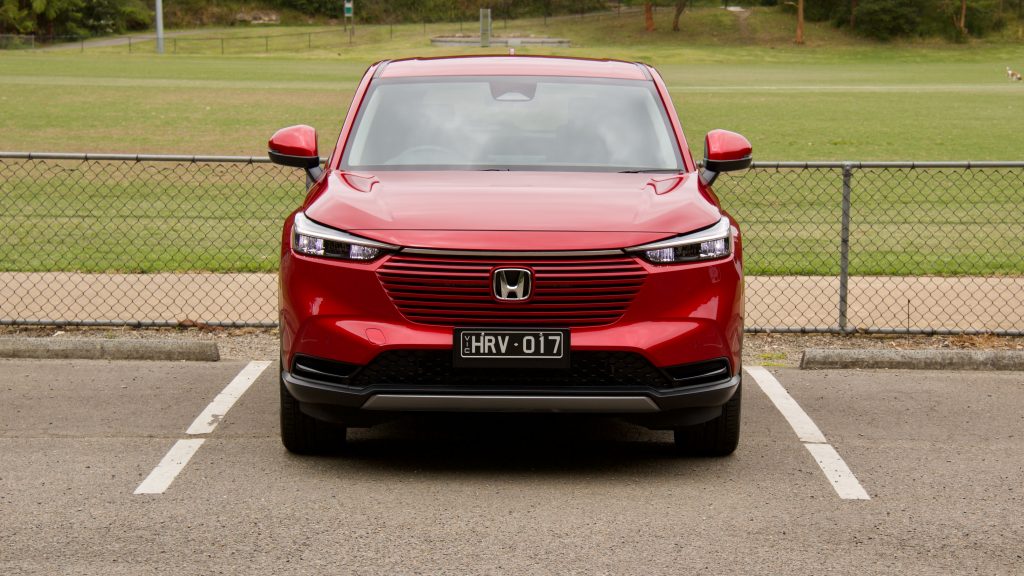
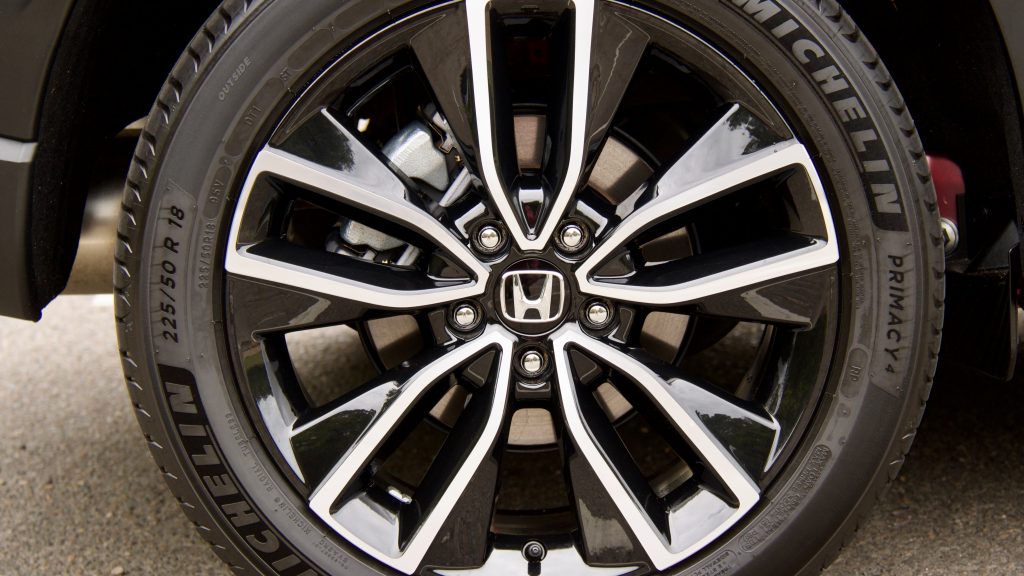
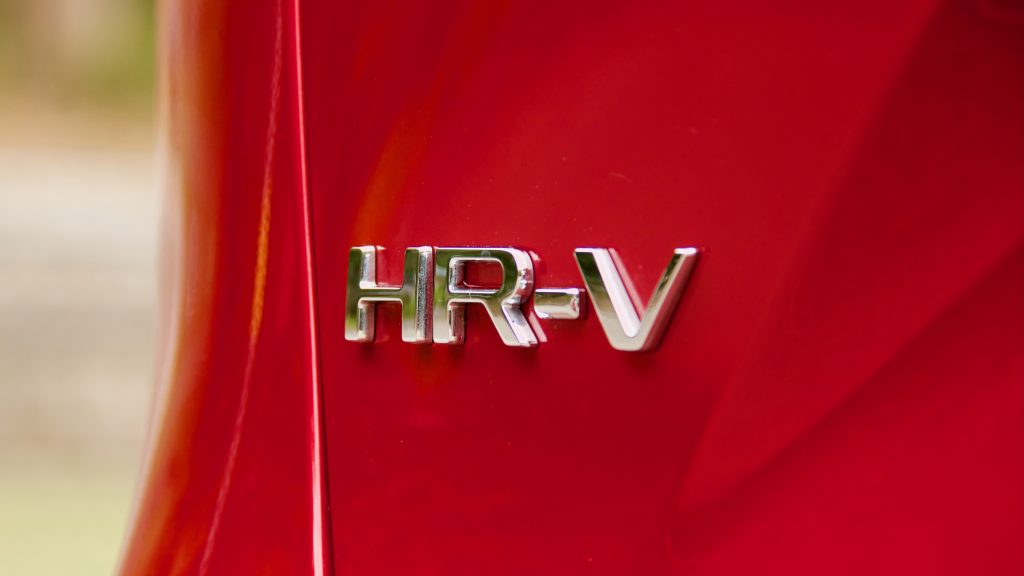
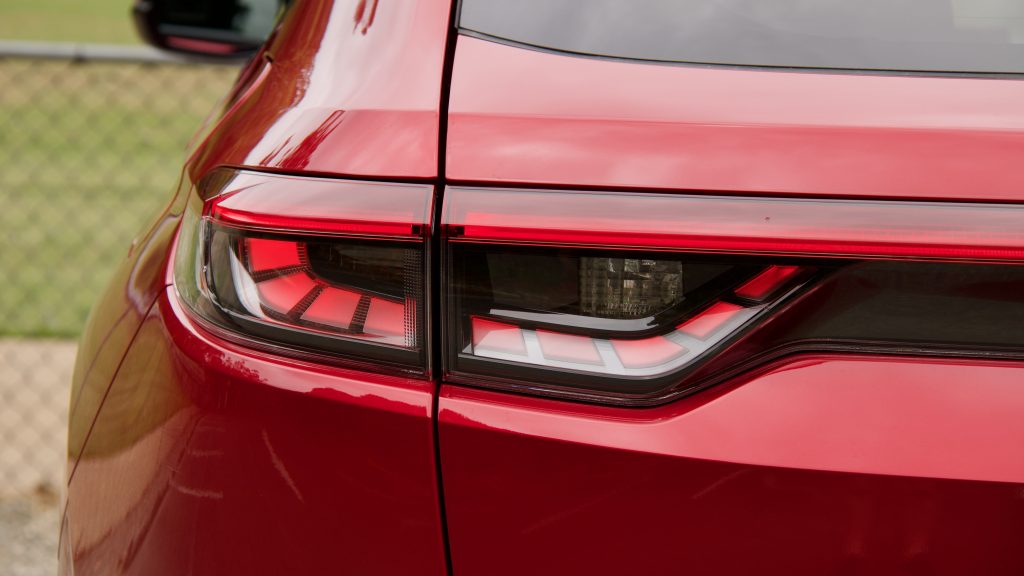
The Mazda also has more safety equipment, including a heads-up display, blind-spot monitoring with rear cross-traffic alert, automatic rear braking and an extra airbag – plus, it’s a five-star ANCAP-rated car, which is one star better than the HR-V. While both Mazda and Honda are pushing for the more premium end of the mainstream segment, we think the Mazda’s extra inclusions easily justify $300 more.
Performance & Economy: 6/10
Under the bonnet of the 2022 Honda HR-V Vi X is a 1.5-litre four-cylinder petrol engine. It makes 89kW of power (at 6,600rpm) and 145Nm of torque (at 4,300rpm) – down 16kW and 27Nm on the previous-generation car and 25kW and 55Nm on the CX-30, though it does weigh 58kg less than the last HR-V and 155kg less than the CX-30. The only available transmission is the CVT automatic and the HR-V is front-wheel drive.
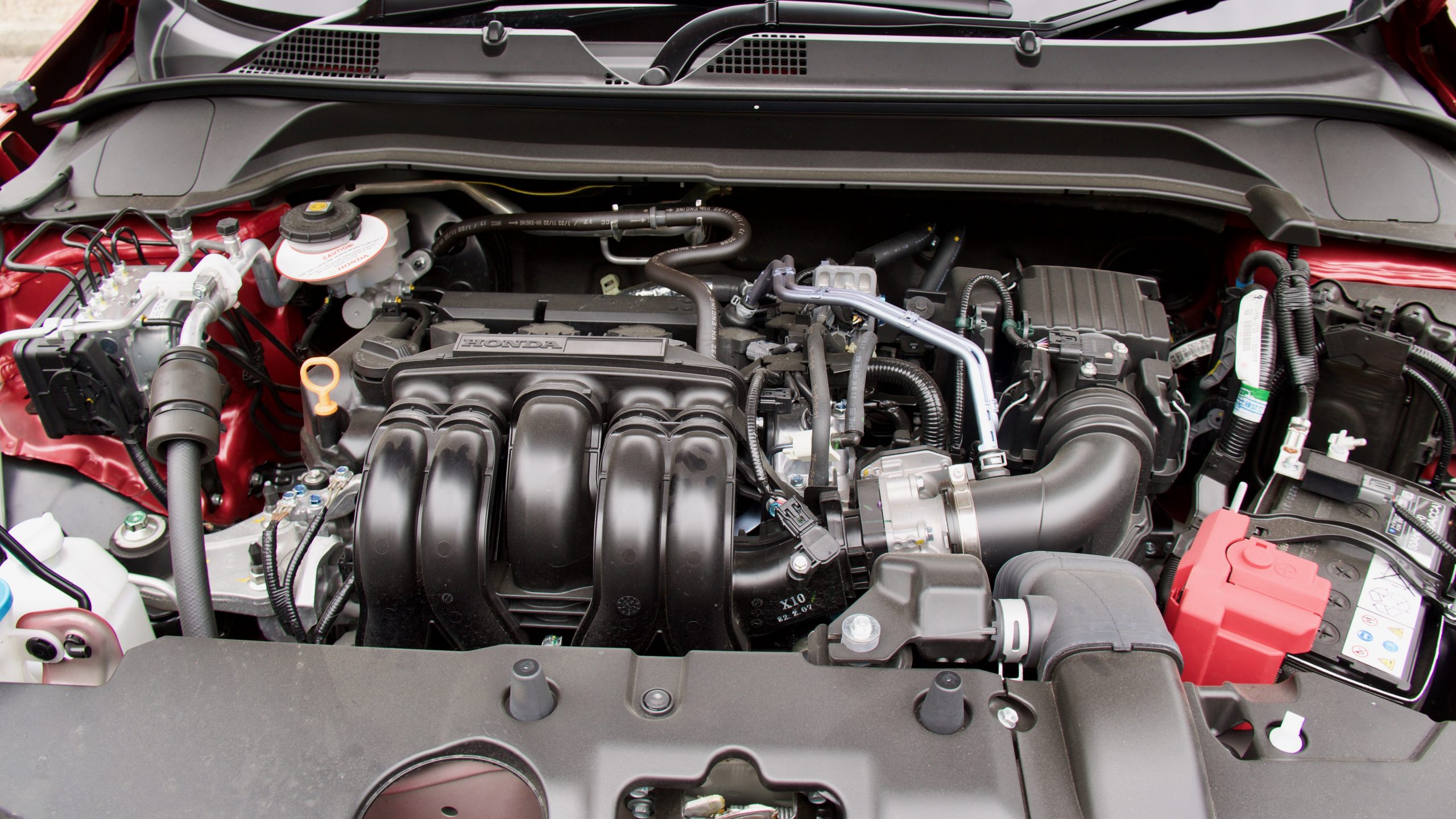
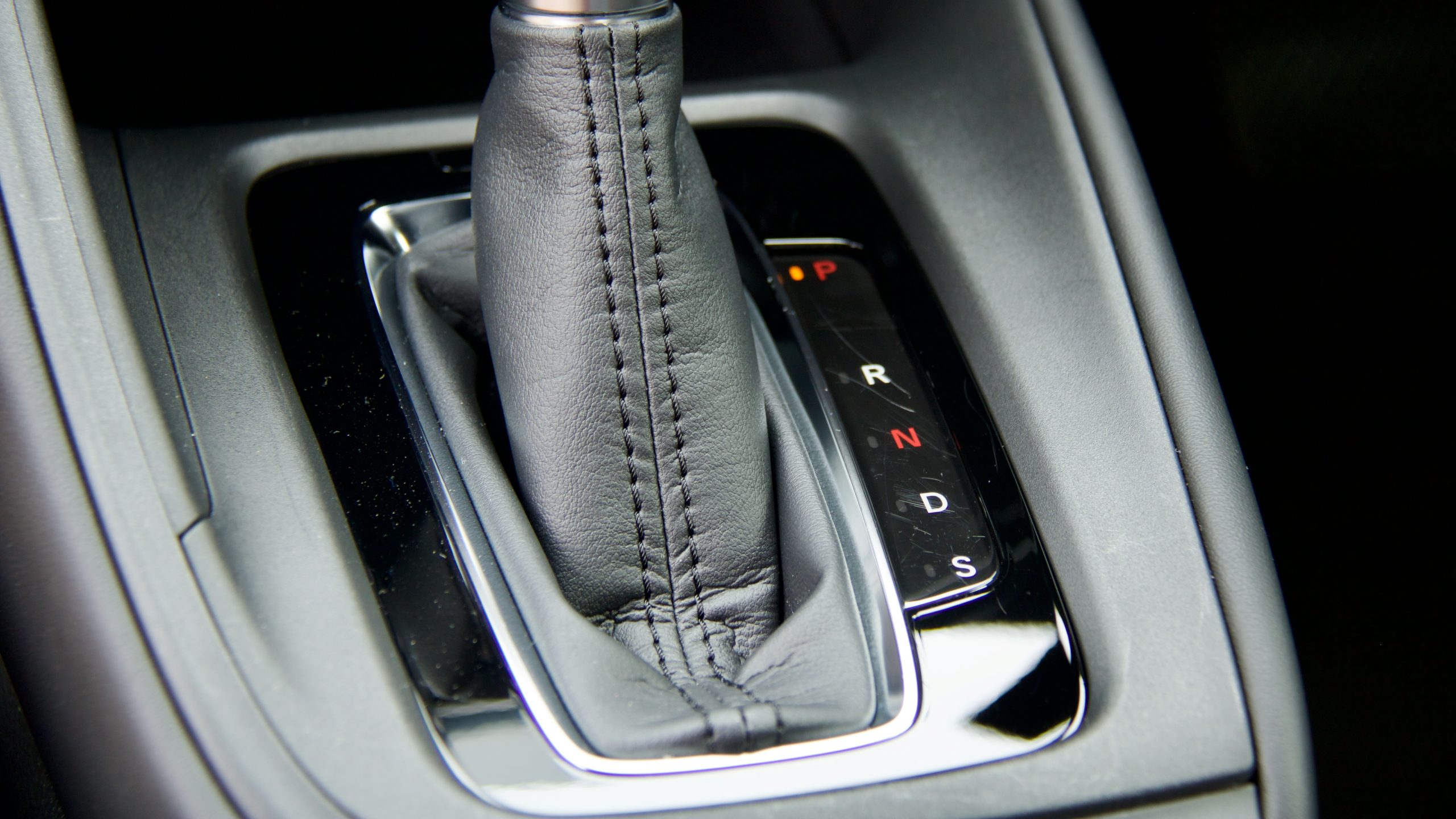
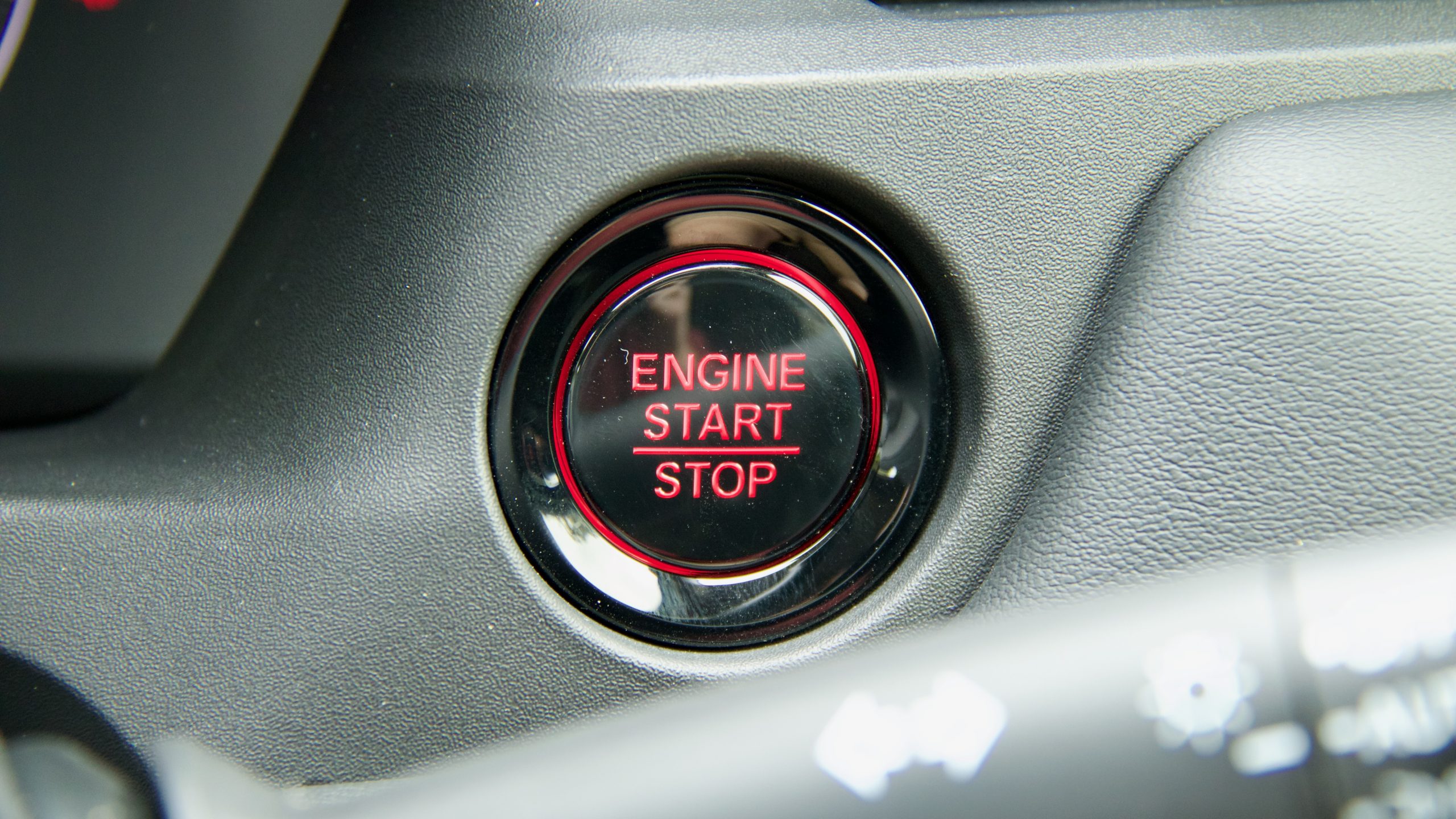
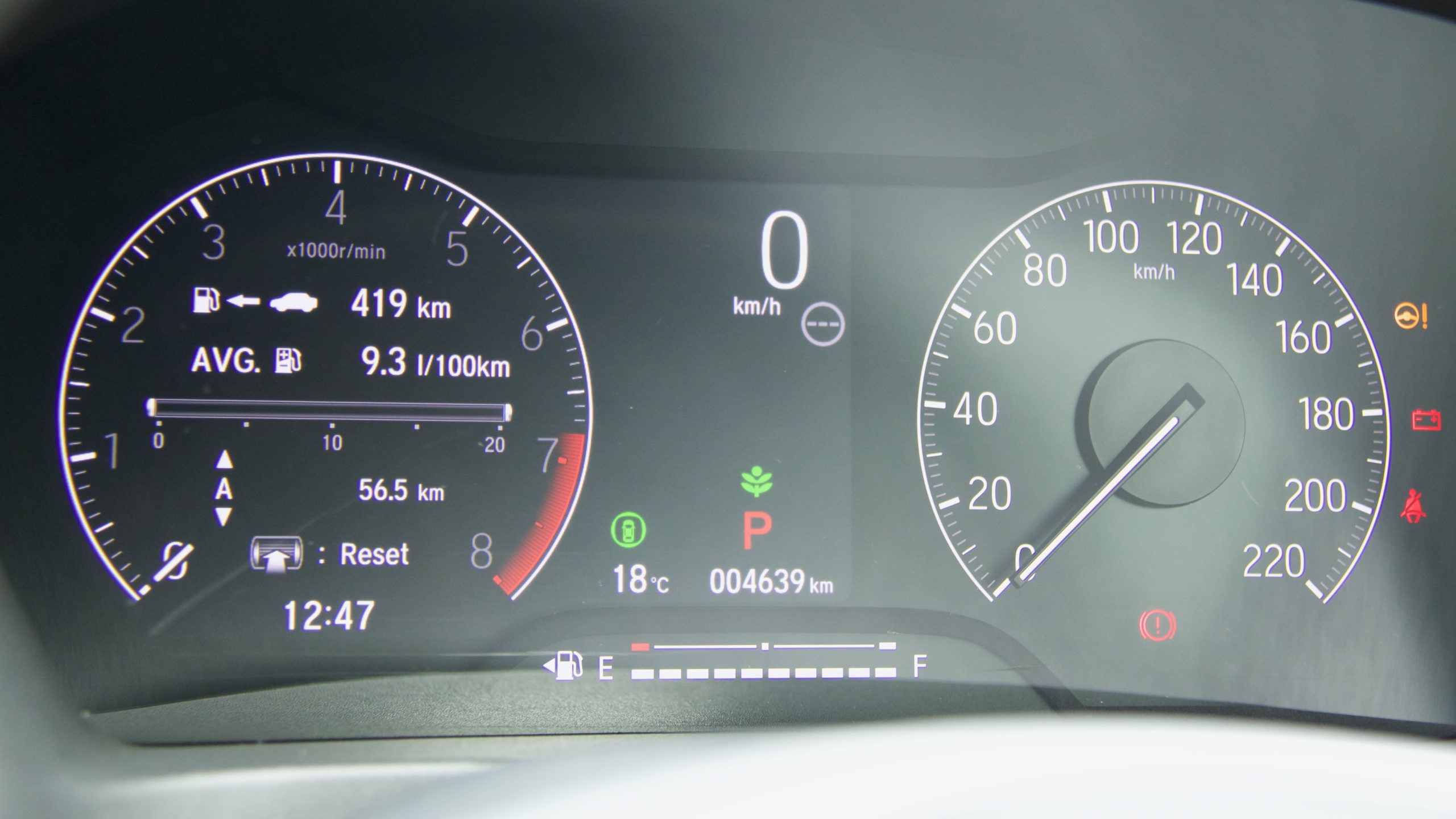
With a claimed 0-100km/h sprint time of over 12 seconds, the HR-V Vi X is not fast. Of course, small SUVs aren’t known for their sprinting ability and the HR-V’s performance is fine around town, but any time you need more than half throttle, its lack of grunt is noticeable. The CX-30, thanks to its peak 200Nm torque (55Nm more than the HR-V) hitting slightly lower in the rev range and six-speed automatic transmission, feels much punchier.
The CVT automatic, unfortunately doesn’t display the same stepped faux gearing as the hybrid. Instead, no matter what you do with the throttle, the revs spike and stay spiked until you let off the throttle. The engine is unfortunately loud as well, which is something you really notice when you’re flooring it. Unfortunately, Australia is denied the 134kW turbocharged version of this engine that South East Asia gets thanks to our Japanese production source – a touch ironic given we received only the old 1.8-litre engine in the last-generation HR-V, because it was sourced from Thailand.
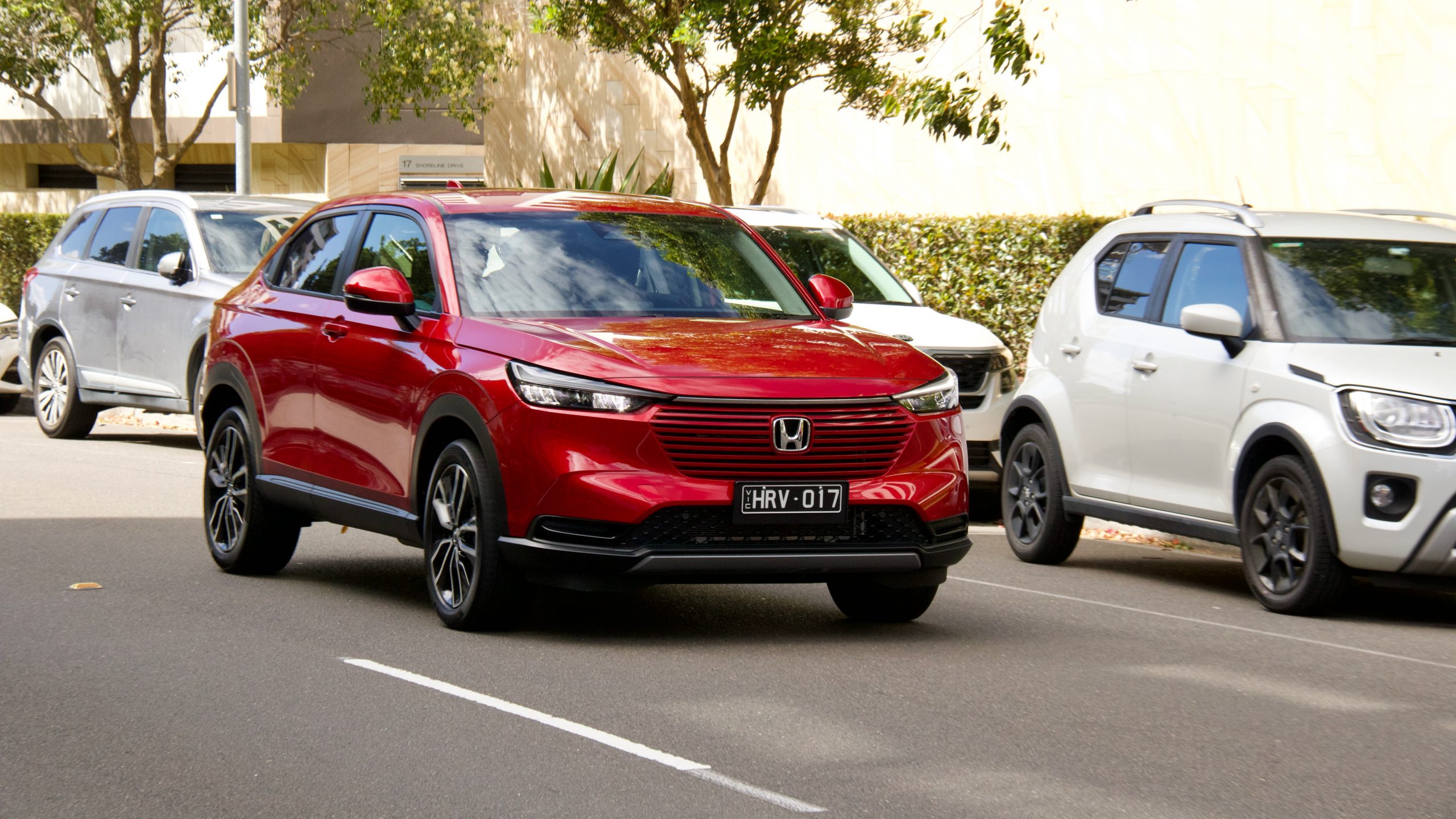
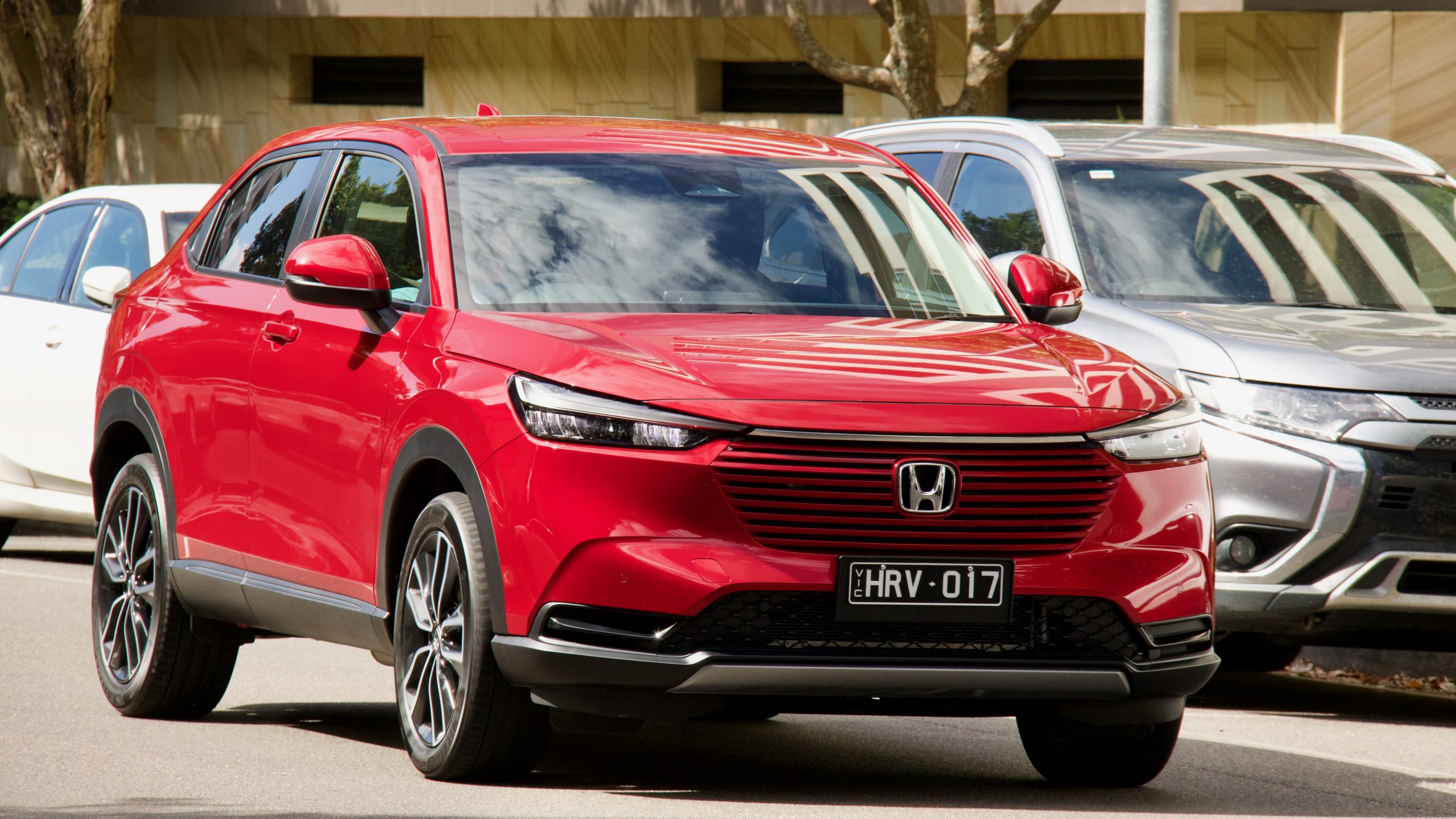
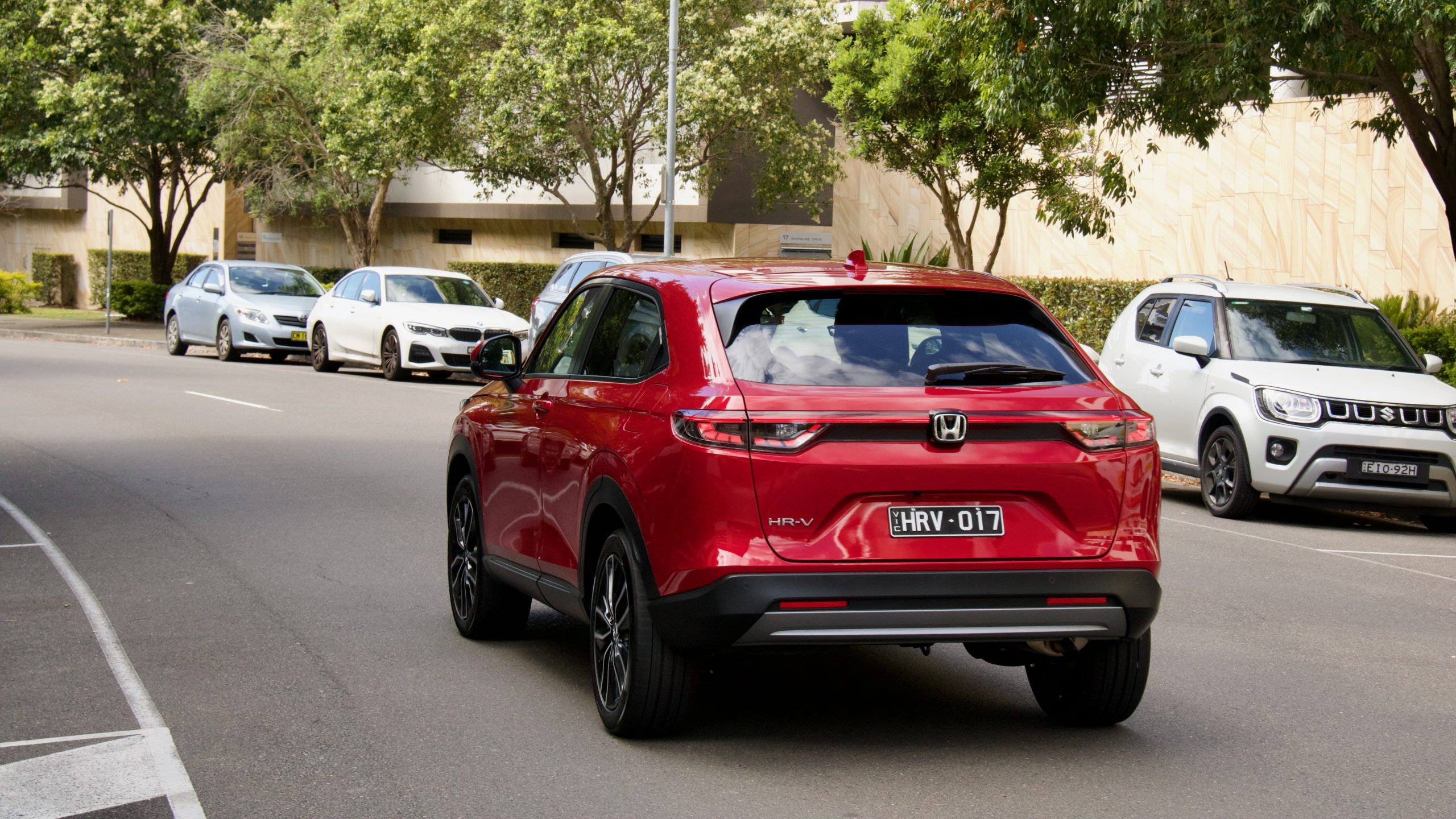
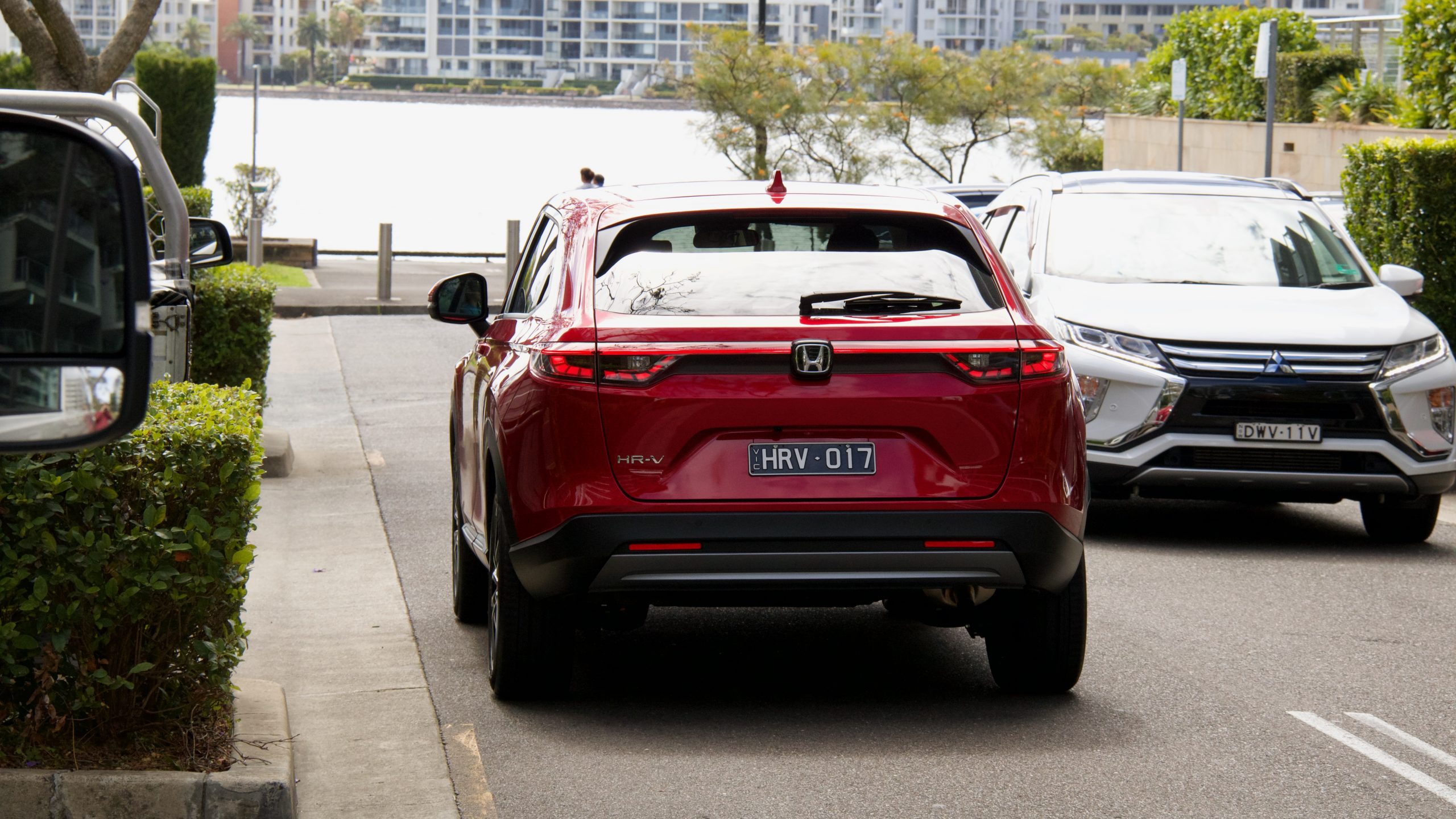
The claimed combined fuel consumption for the HR-V Vi X is 5.8L/100km, and in our testing, achieved 7.6L/100km in mostly urban driving. It can run on 91RON regular unleaded and has a 40-litre fuel tank. In comparison, the CX-30 G20’s claimed combined rating is 6.5L/100km and in our testing the results were also underwhelming, averaging around 8.0L/100km in it in mostly urban testing – but a silver lining is that it has more grunt in the first place.
Ride & Handling: 8/10
Like most of its competitors, the 2022 Honda HR-V Vi X shares its platform with a city car: in this case, the HR-V sits on the same ‘Honda Global Small Car’ platform that also underpins the latest Jazz. This gives it an unremarkable suspension set up with a torsion beam at the rear, but the new HR-V’s driving experience is more rounded and more refined than the previous HR-V, and overall, it rides and handles well for the segment.
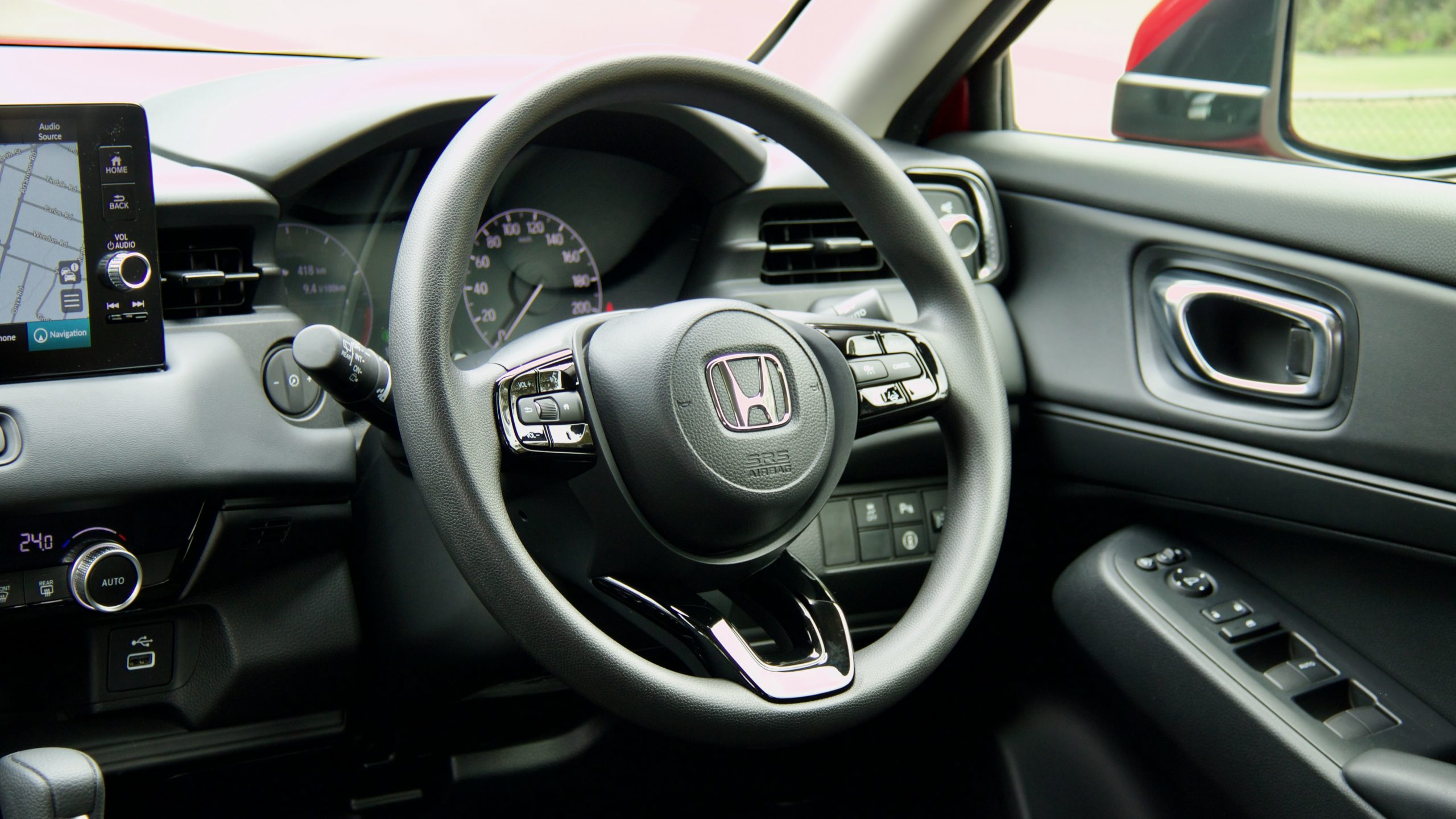
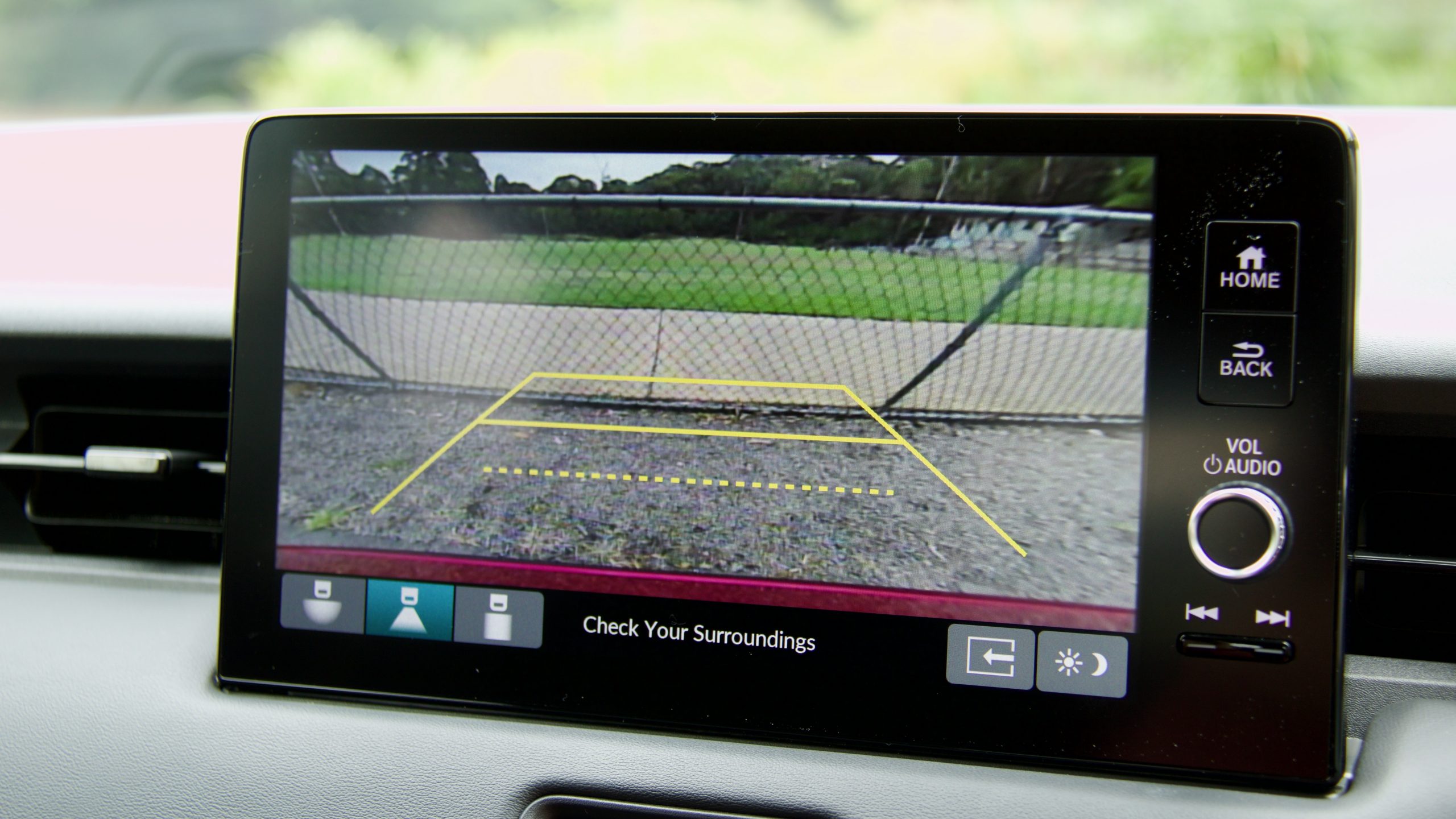
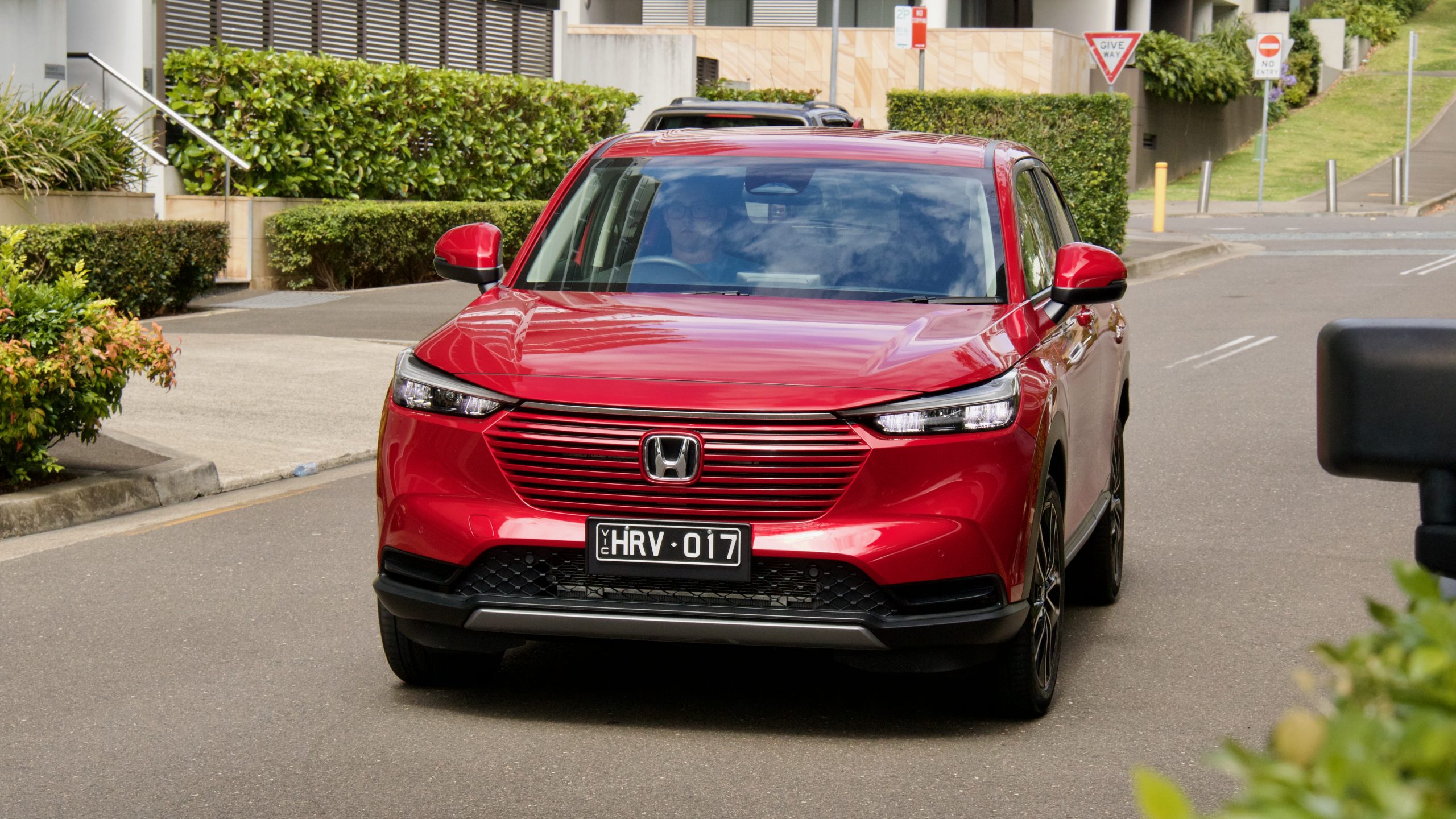
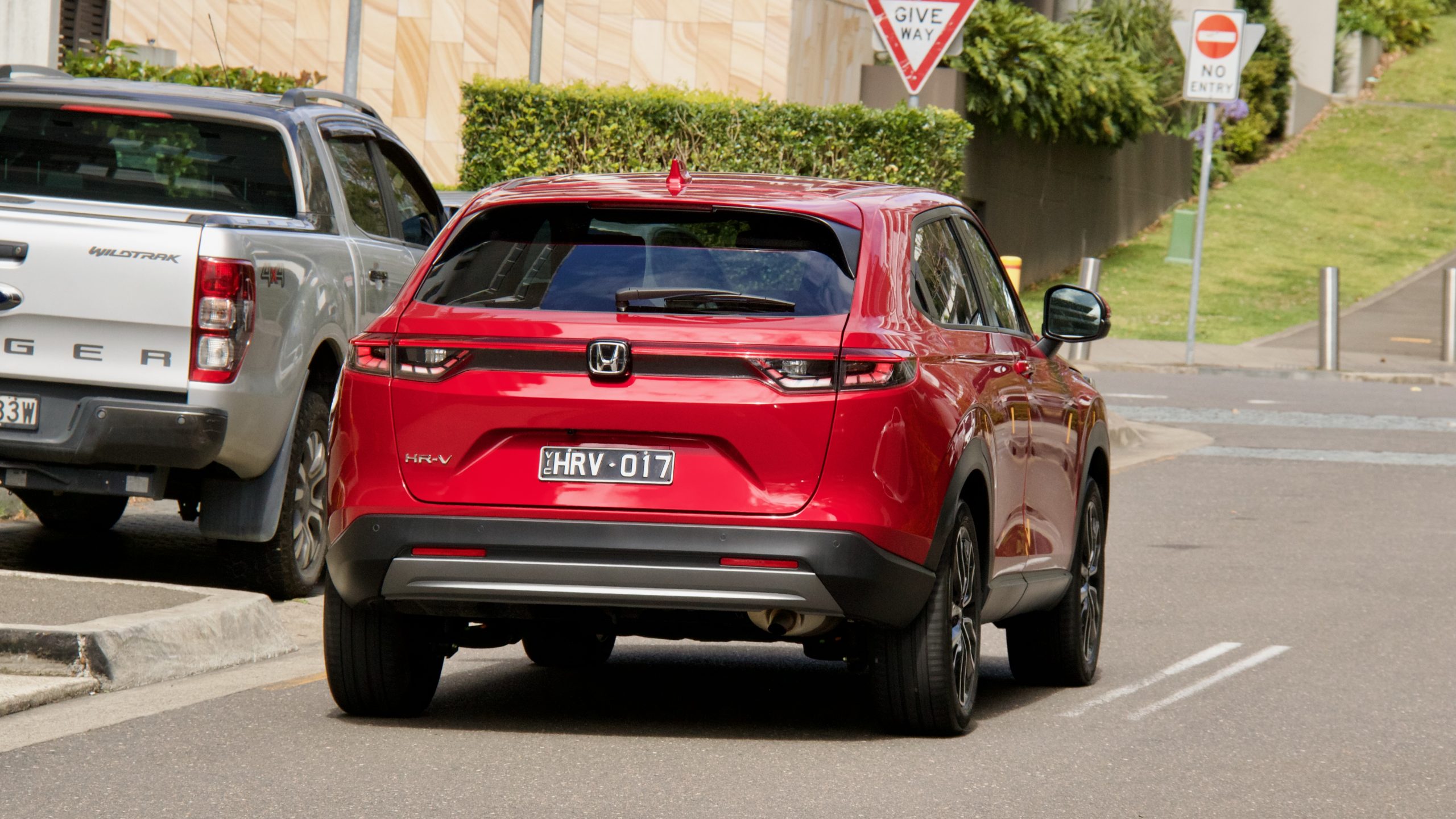
It doesn’t strike the same great balance of ride and handling as the CX-30, but it drives well with quick steering, keen handling and reasonable ride comfort – only bigger low-speed bumps can upset it a bit, thanks to its large 18-inch wheels. Special mention must go to the HR-V’s suite of active safety tech, which is quite well tuned – the auto braking is attentive, the lane keep assistance is subtle but effective and the reversing camera is quite detailed – though the Vi X misses out on blind-spot monitoring and rear cross-traffic alert, which are features that we think all cars should have as standard.
Interior & Practicality: 9/10
As we discovered when we tested the HR-V e:HEV L hybrid last year, the interior of the new generation Honda HR-V is a mostly big step forward in comparison with the old generation model. The quality improvement – even in the more basic Vi X – is noticeable and all things considered, it feels more sophisticated and technologically advanced than the previous model.
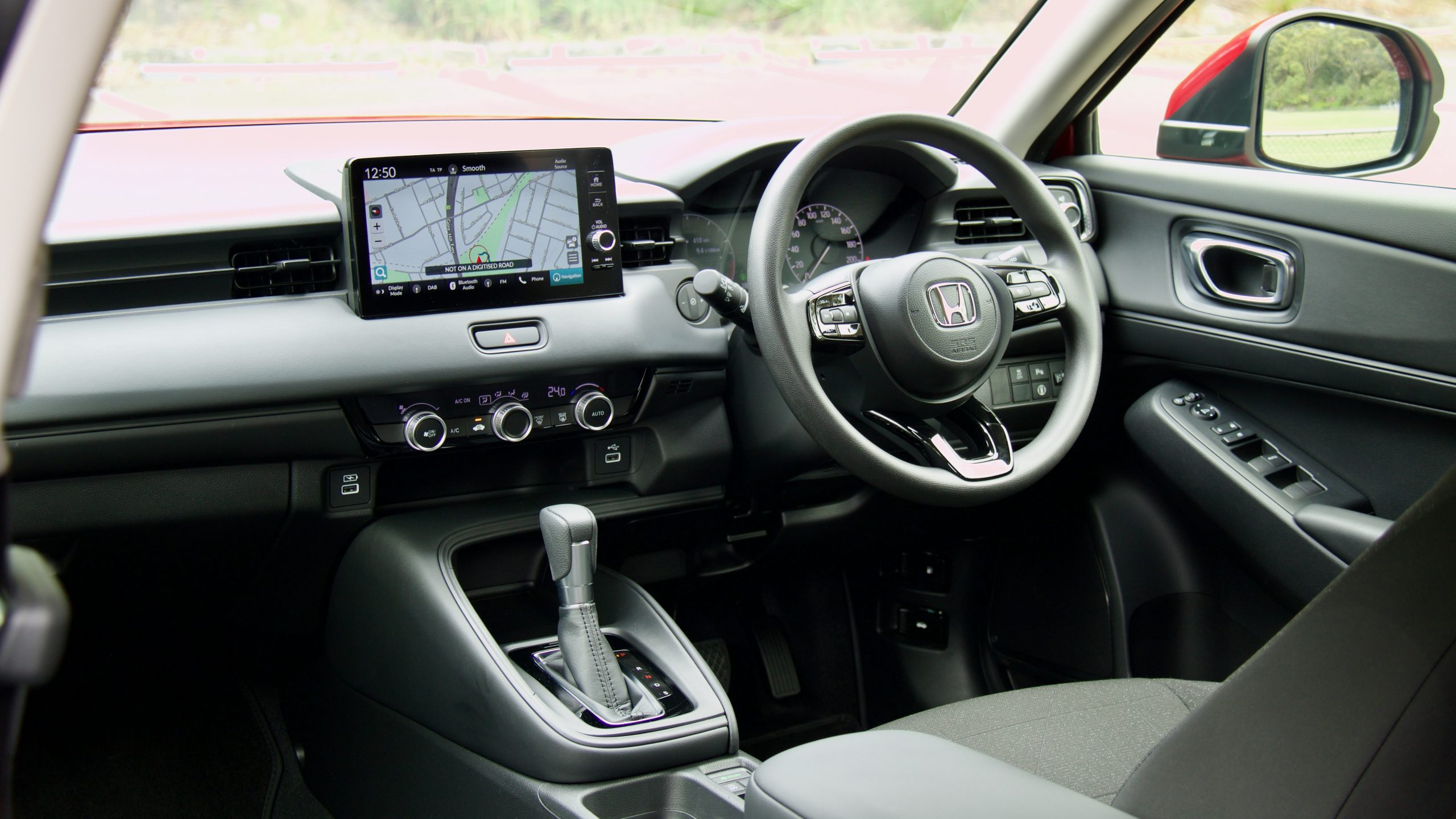
The quality inside the cabin of the HR-V Vi X isn’t quite as high as the e:HEV L hybrid that sits above it, but despite not featuring much in the way of soft touch materials, it’s still a pleasant place to be. While there are more hard plastics than the hybrid, it still feels well built and the switchgear – the steering wheel buttons, for example – feel great in hand. One annoyance though: no leather steering wheel on an almost-$37,000 car? As the one thing you touch most when interacting with a car, that’s not great.
Centre of the HR-V’s cabin is a 9.0-inch touchscreen with wired Android Auto and wireless Apple CarPlay, satellite navigation and digital radio. It’s a very easy to use system, with quick response times and nice graphics as well. The four-speaker sound system isn’t amazing, but it gets the job done, while there’s also two USB-A ports in the front cabin too.
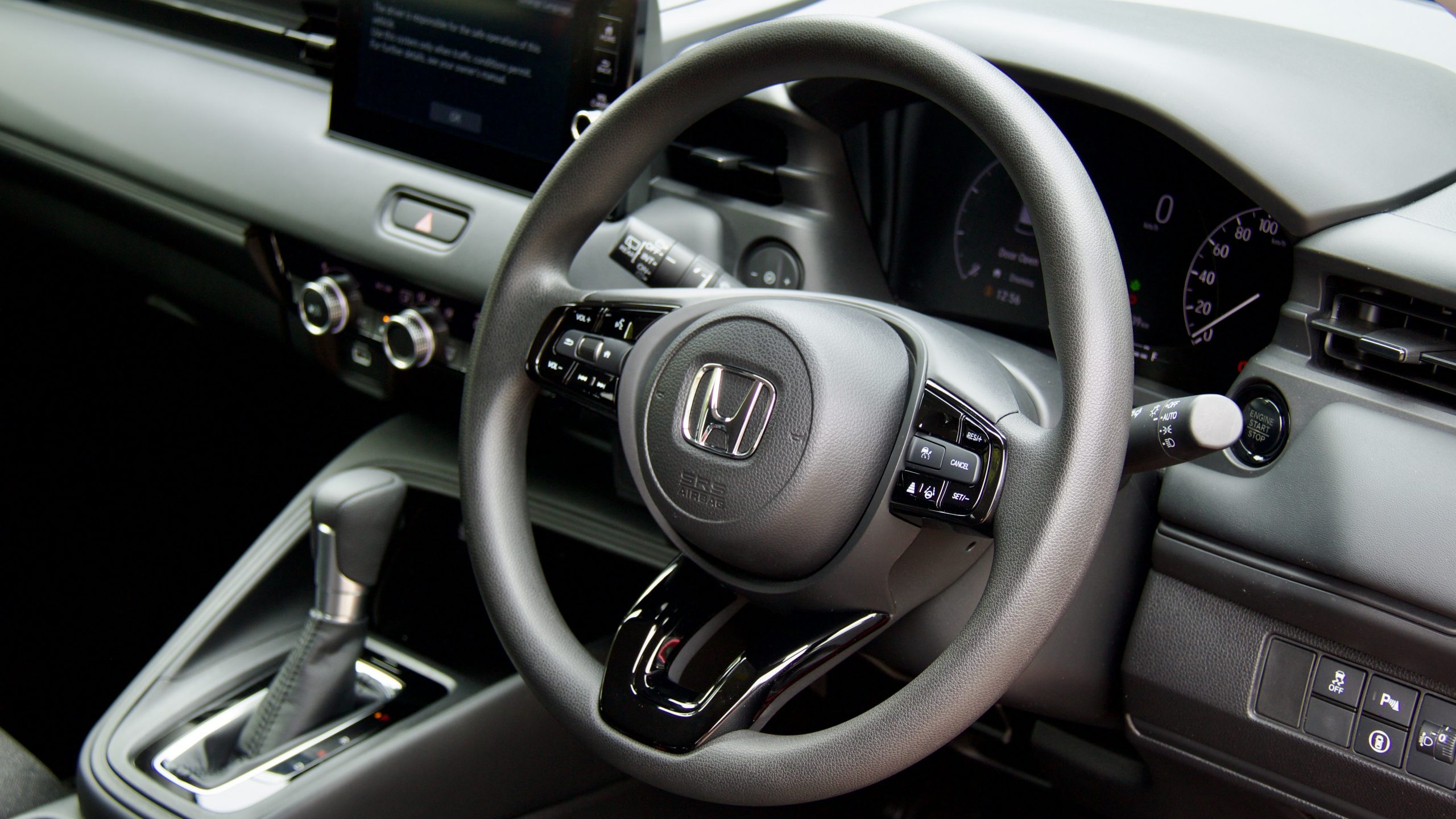
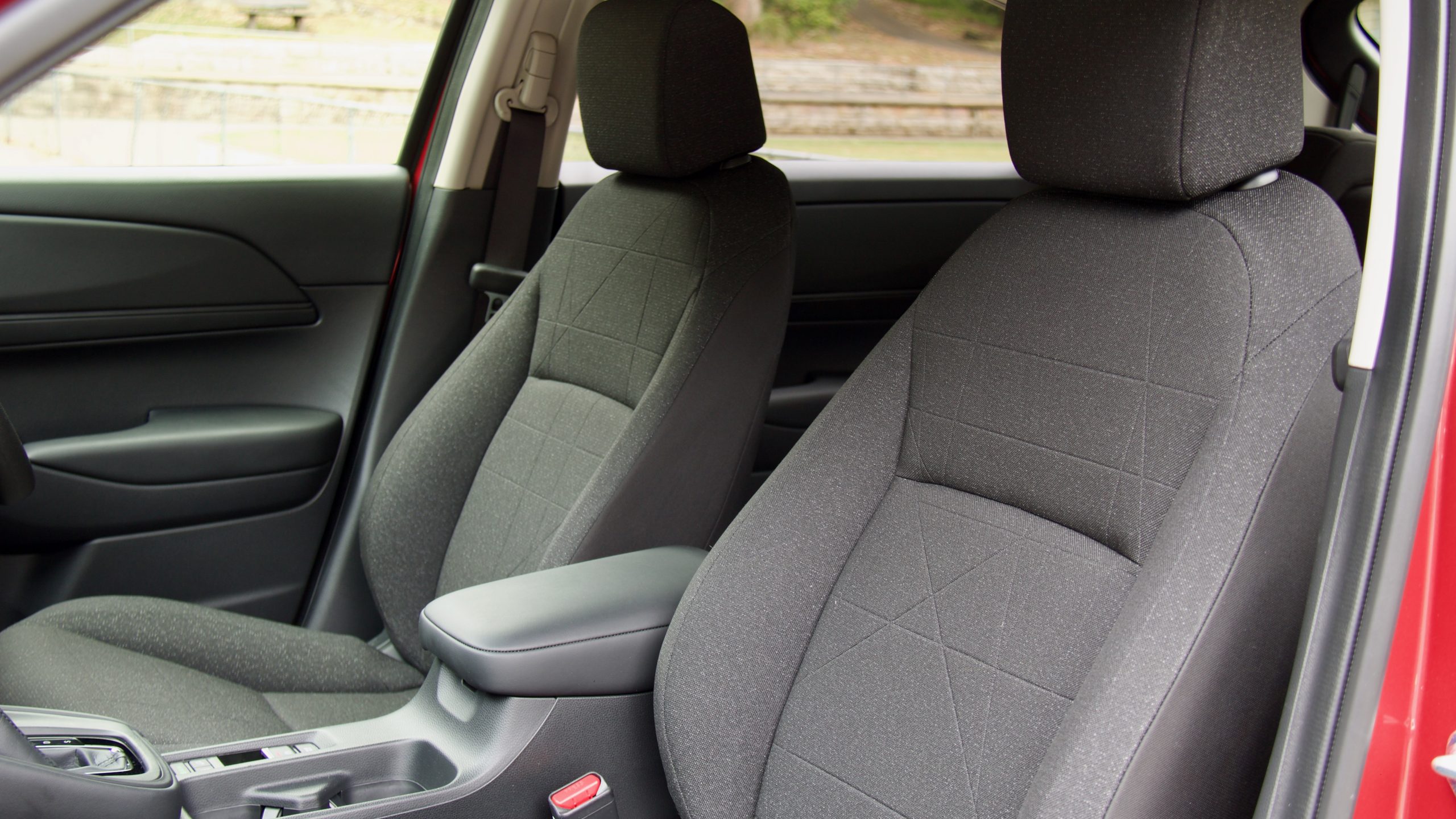
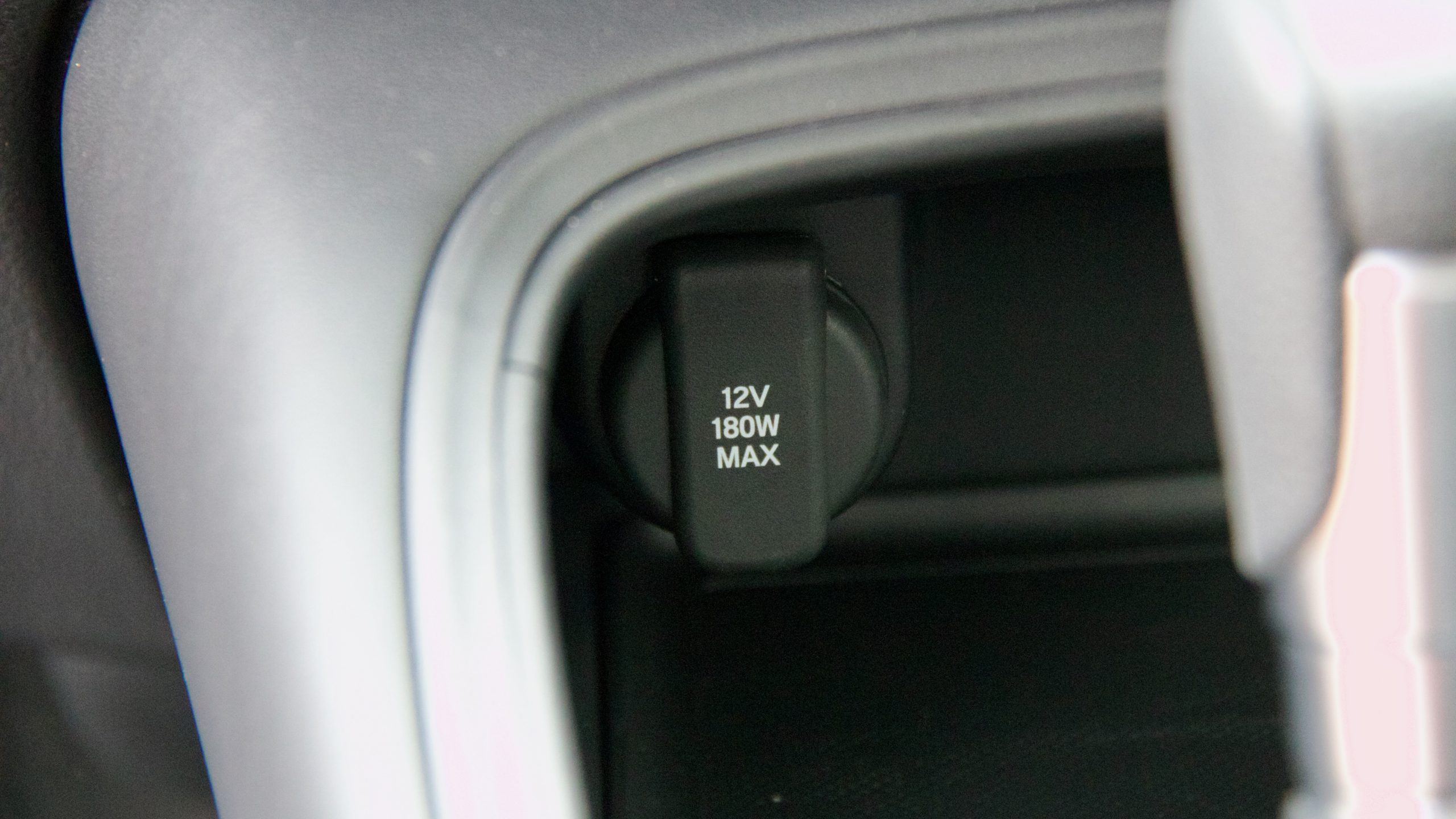
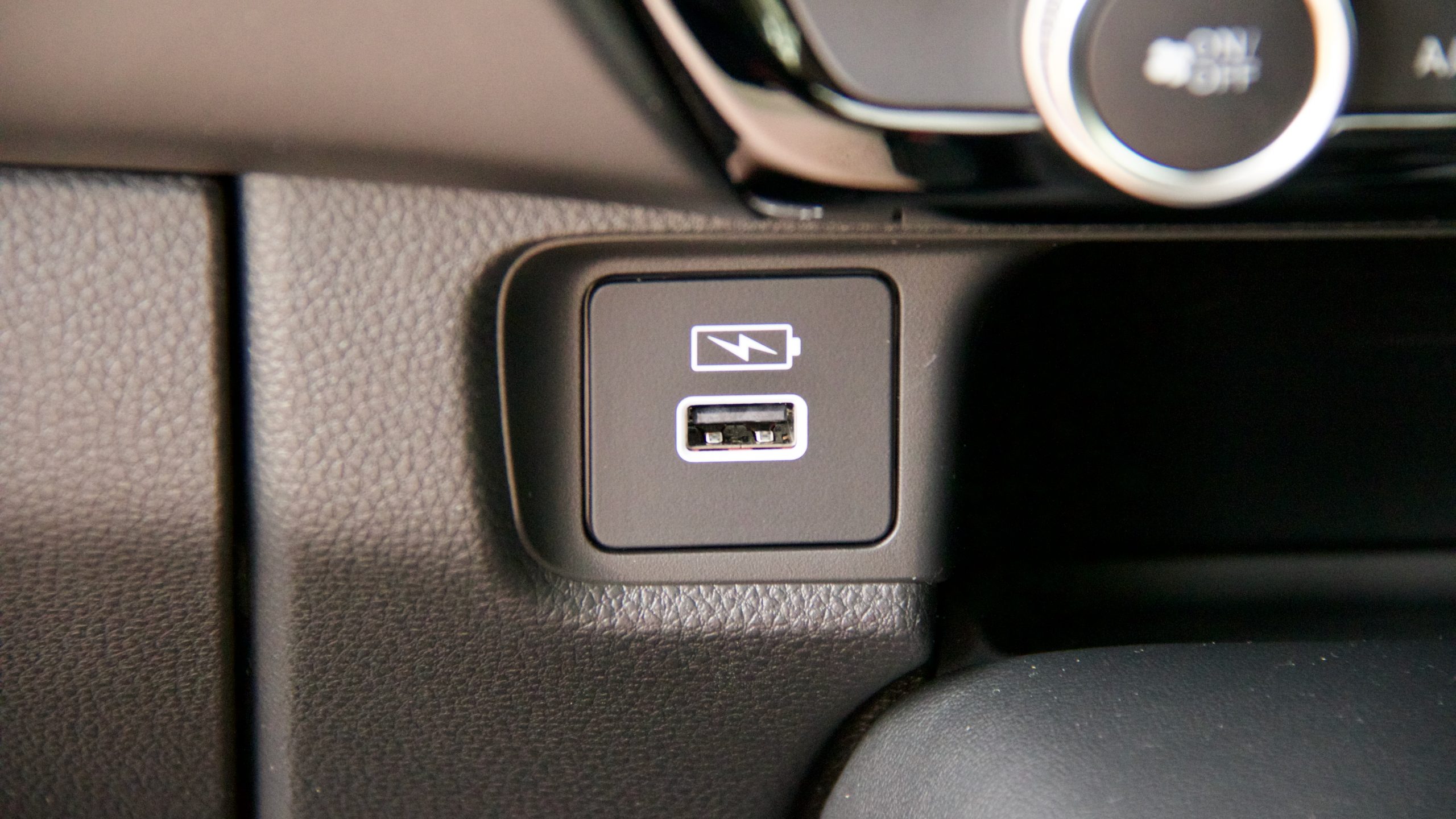
As you’d expect for a Honda, the HR-V’s front cabin is quite practical, with big door bins, a large centre console area, a deep bin underneath the centre arm rest, a tray underneath the climate control and a reasonably sized glovebox. The front seats are comfortable – though lumbar adjustment would be nice – and the visibility is good, helped by the large mirrors and thin pillars, though the belt line is high.
The back seat of the HR-V is perhaps its biggest attribute as it’s quite large – especially for its size. Though, it’s only got four seats – if that matters to you, you’ll have to look elsewhere or buy the larger CR-V. But despite the lack of a fifth seat, the HR-V’s rear cabin is roomy in every direction, especially legroom, while it’s also featured with a centre arm rest with cup holders, a map pocket with a phone holder, storage underneath the seat base and bottle holders in the doors. Notably, the rear air vents, USB ports and second map pocket from the HR-V hybrid are missing.
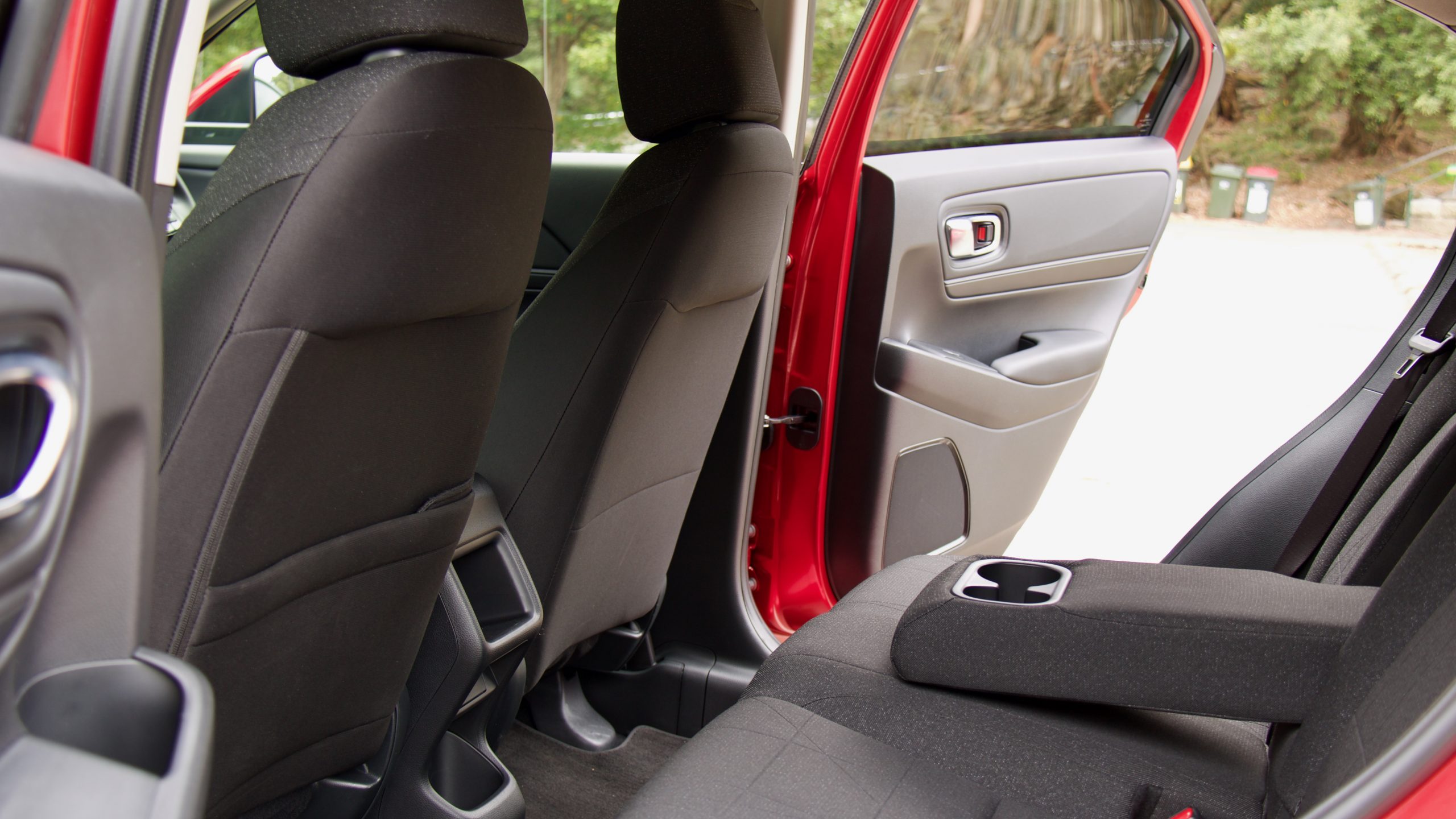
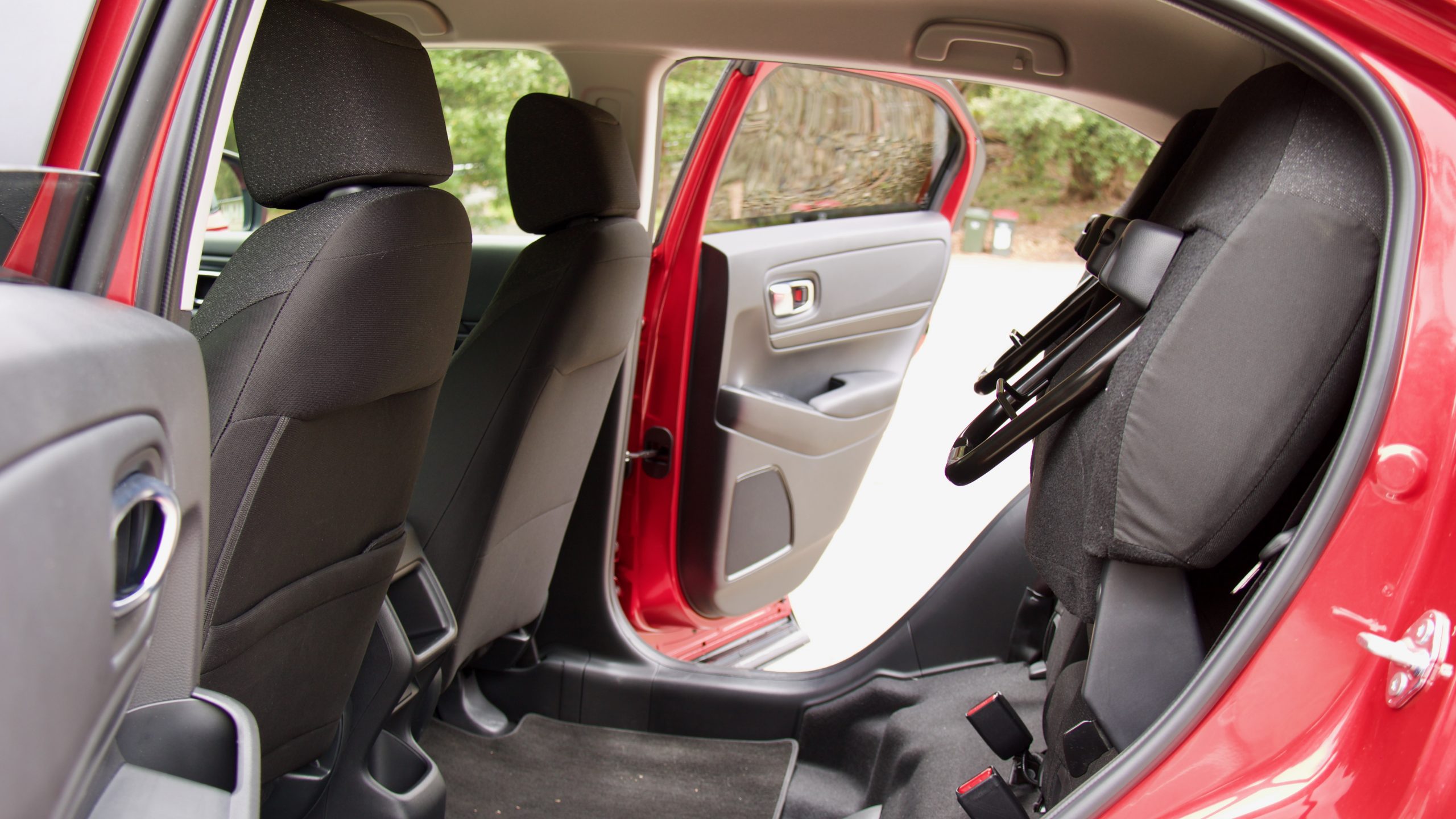
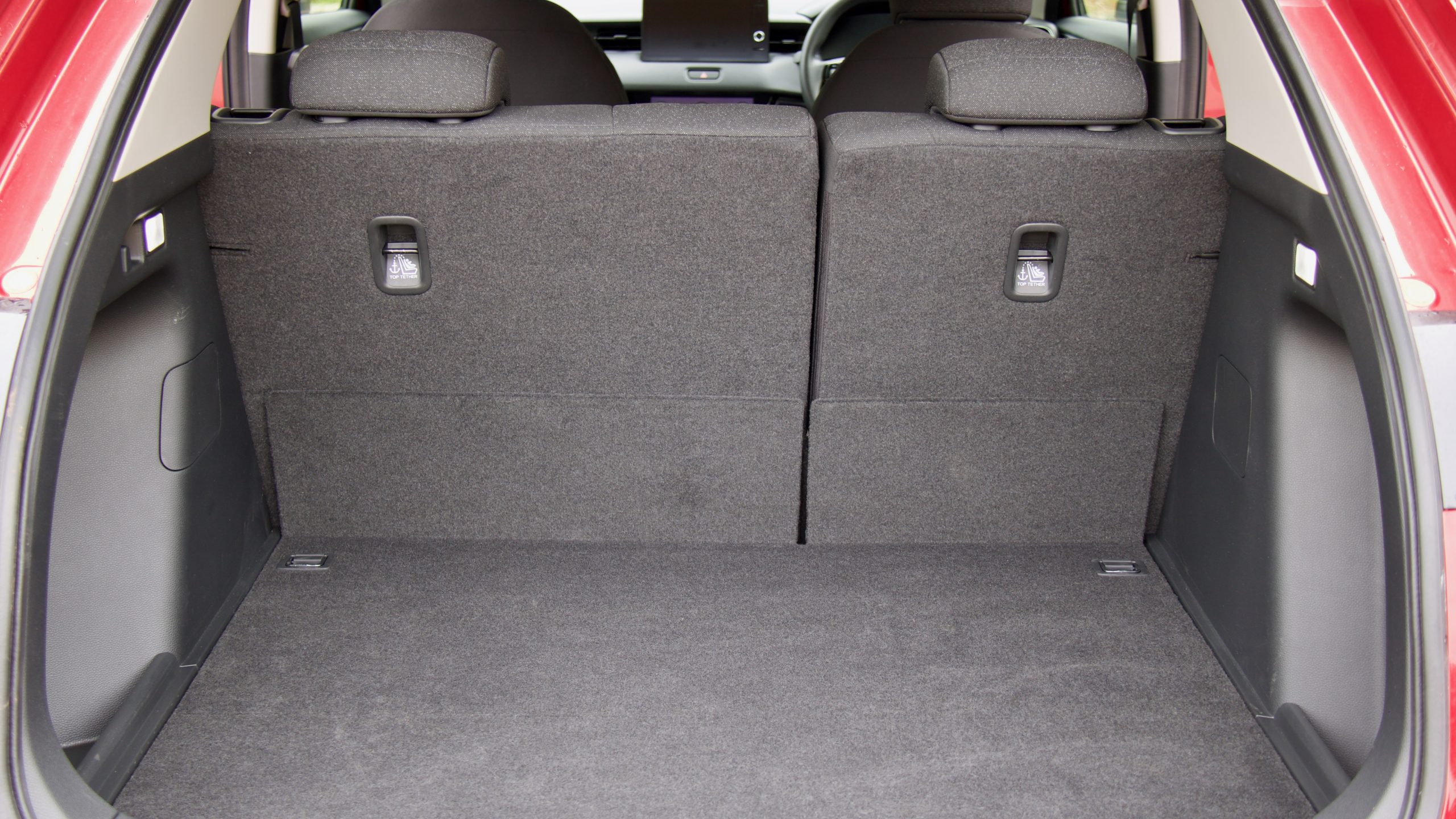
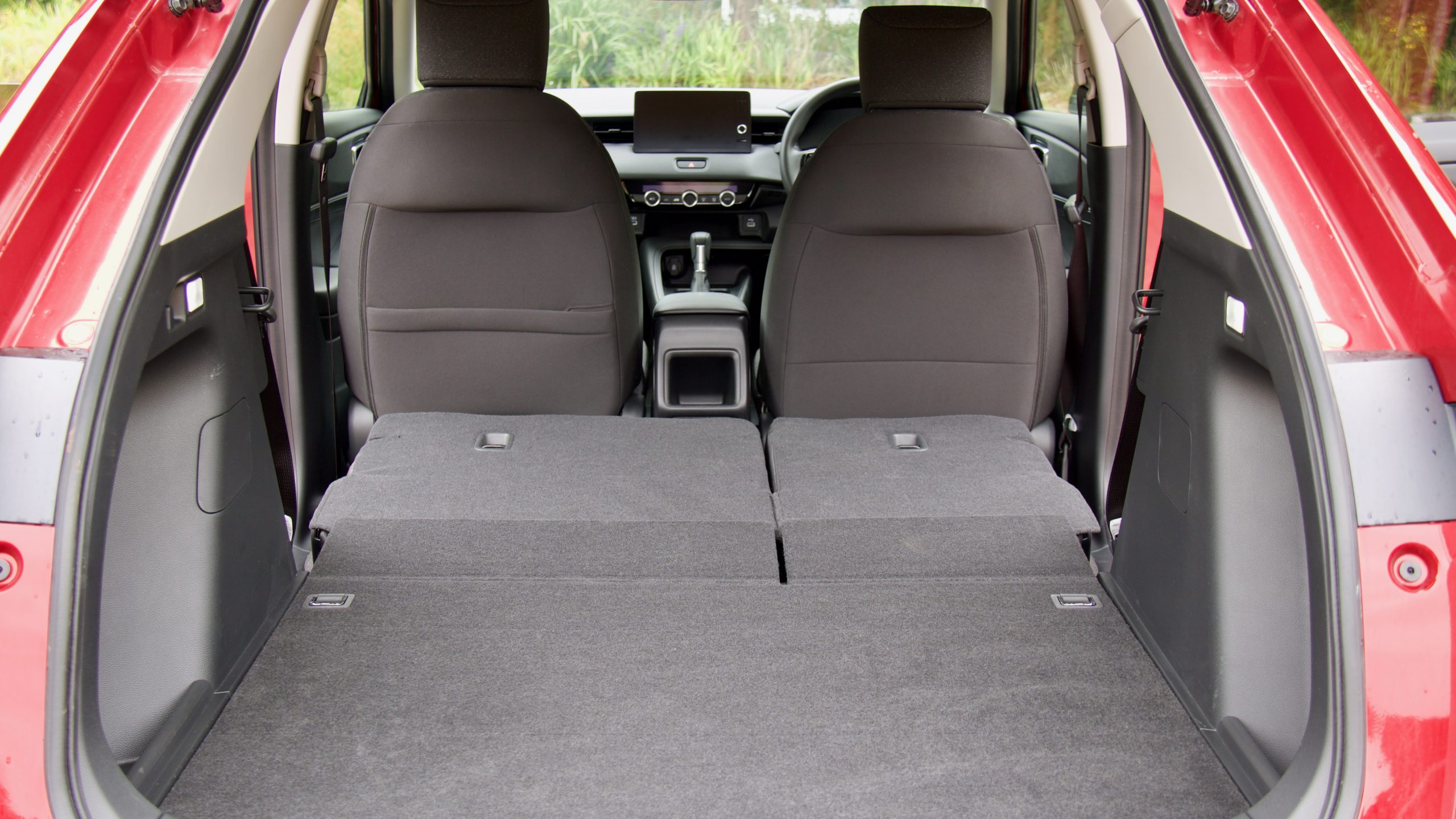
The boot of the HR-V measures 304-litres with the seats up, and a large for its size 1,270L with the seats folded. That’s smaller than the last HR-V, which could fit in 437L/1,462L respectively, but it’s still quite practical with underfloor storage and storage on the side. Impressively, all HR-Vs feature Honda’s ‘Magic Seats’ system, which allows the rear seat to fold completely flat or for the seat base to be folded up against the backrest if taller items need to be carried. The system debuted in the first-generation Jazz in 2001 and we’ve loved it ever since.
Service & Warranty: 9/10
Like other new Honda products in Australia, the 2022 Honda HR-V Vi X comes with a five-year unlimited km warranty with five years of roadside assistance. Its service intervals are once-yearly/every 10,000km and the first five services cost just $199 each for $995 in total – though travelling more than 10,000km annually will see that cost climb.
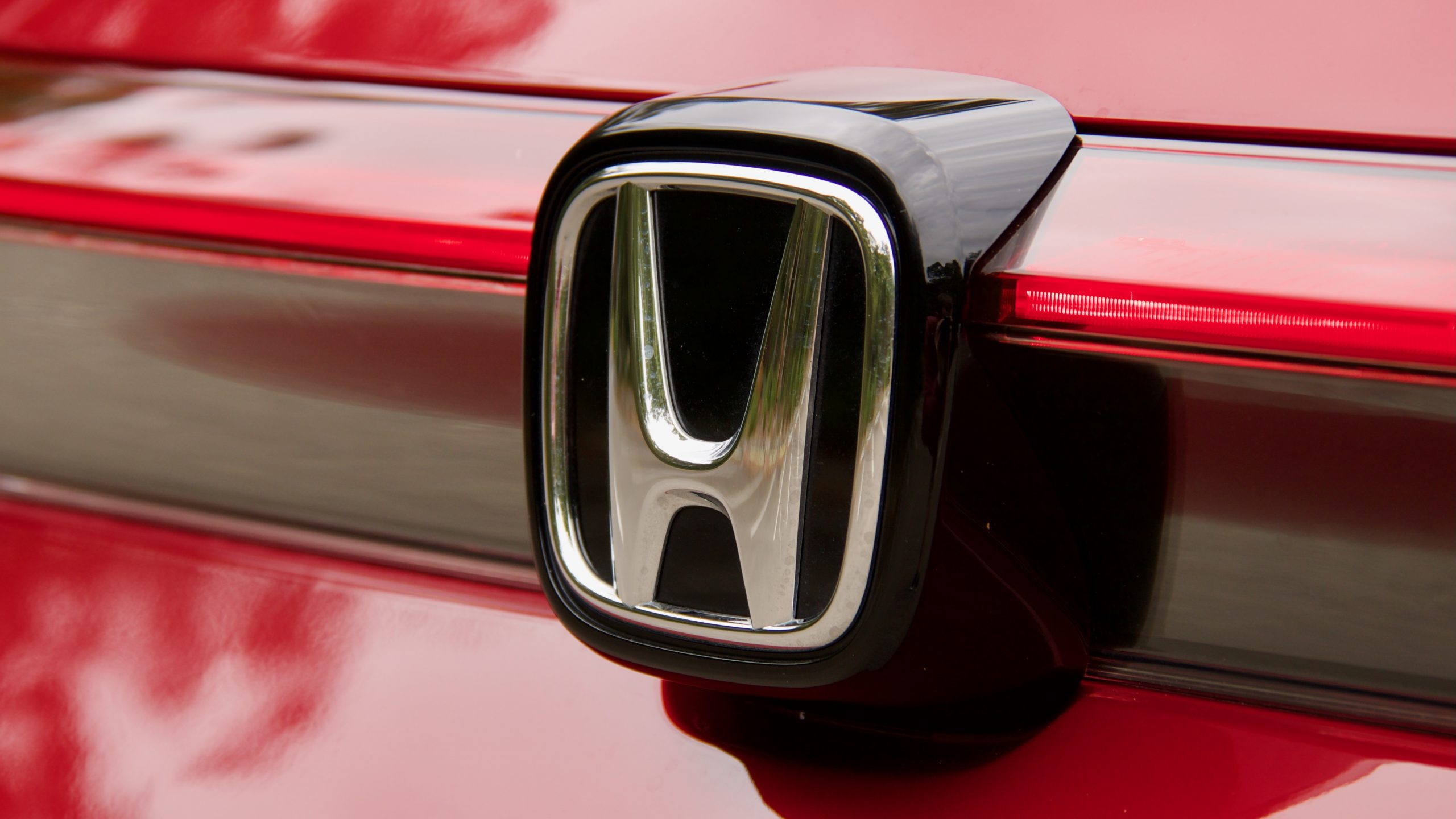
Mazda features an identical warranty set up to Honda: five years/unlimited km with five years of roadside assistance and 10,000km/once yearly service intervals. Five years/50,000km of servicing the CX-30 G20 Evolve costs $1,981 ($396 per service), which is more than double that of the Honda.
The 2022 Honda HR-V Vi X DiscoverAuto Rating: 7.6/10
Overall, the 2022 Honda HR-V Vi X – like any car – offers both positives and negatives. In the positives corner, it’s attractively styled, it rides and handles nicely, its cabin is practical and full of clever touches and it’s far more technologically advanced than its predecessor. It’s also quite cheap to service for the first five services and its centre touchscreen is well featured and simple to use.
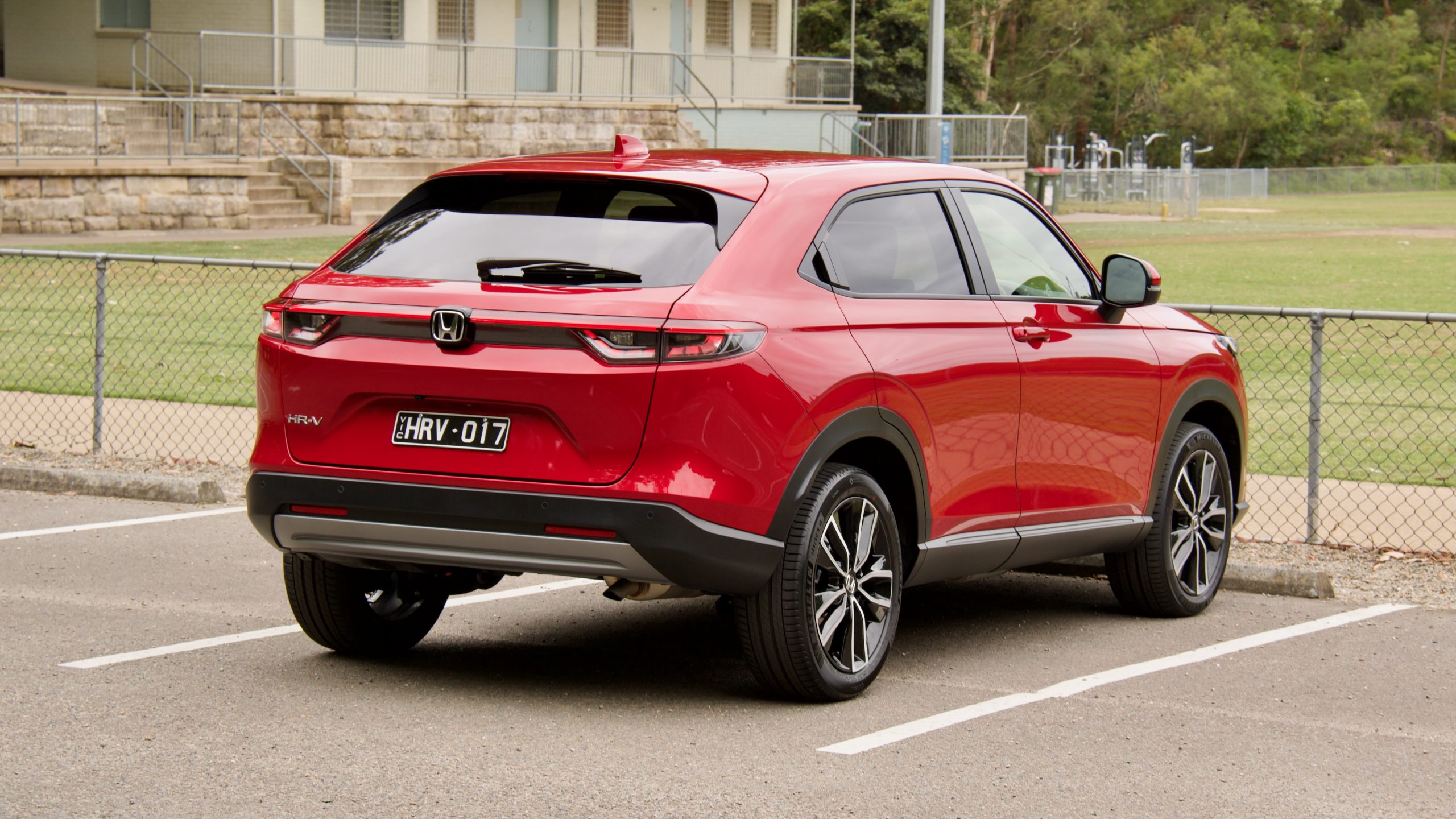
However, in the negatives corner are a lacklustre drivetrain that’s loud and relatively thirsty, it’s only got four seats – if that matters to you – and its value equation is lacking as well, with just too much equipment reserved for the top-spec hybrid. Overall, we do quite like the HR-V but the hybrid is definitely the model to go for. Unfortunately, there’s a big $10,300 premium for it, so do your sums before committing.
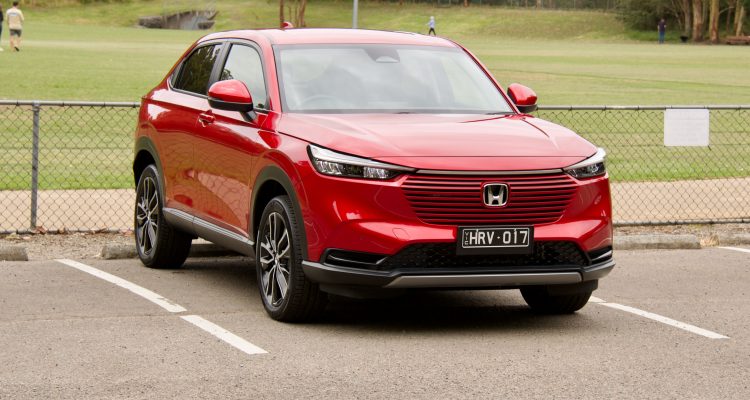
Leave a Reply